These New Zealand travel tips are everything we wish we’d known before our own campervan adventure—so you can skip the surprises. From Kiwi slang to must-pack items, we’ve got all the practical advice to help you feel totally prepared.
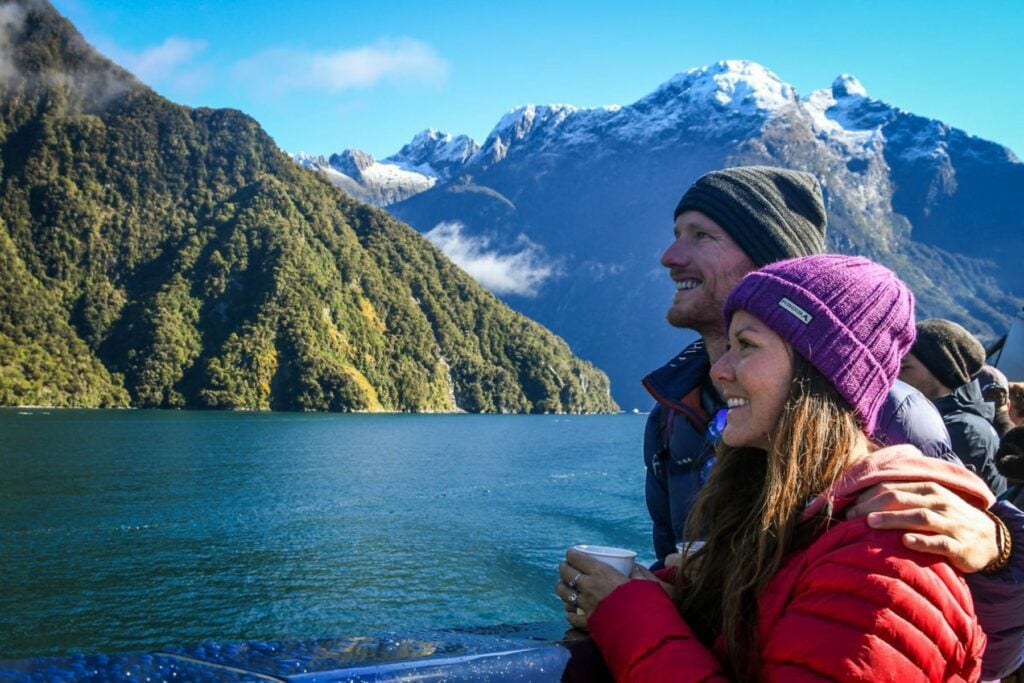
New Zealand is a country we’d been itching to visit for years. I mean, it’s hard to find many other countries in the world where you have so much beauty and adventure packed into one compact space.
We spent 5 weeks traveling around New Zealand by campervan, and had the time of our lives. We hiked mountains, bathed in hot springs, drank wine (lots of it!), slept in mountain huts, and relaxed on the beach.
However, I will say there were a lot of things that surprised us about New Zealand. Some things were good surprises, like golden kiwis (yum!). But other surprises were not so delicious…
For example, we had no clue just how awful the Internet in New Zealand would be. And we weren’t quite prepared for all the Kiwi slang… What are they even saying?!
We had a fantastic time traveling in New Zealand, and our trip would have been even better if we had known a few things in advance.
We want to make sure you are totally prepared and know what to expect so we’ve compiled our top New Zealand travel tips based on our experience. This is the ultimate New Zealand travel guide for first-timers!
New Zealand Travel Guide
- Our experience
- Preparing to enter New Zealand
- New Zealand travel tips
- Best time to visit New Zealand
- How many days do you need
- How to get around
- Top things to do in New Zealand
- Perfect New Zealand itinerary
- More New Zealand travel resources
Our experience traveling in New Zealand
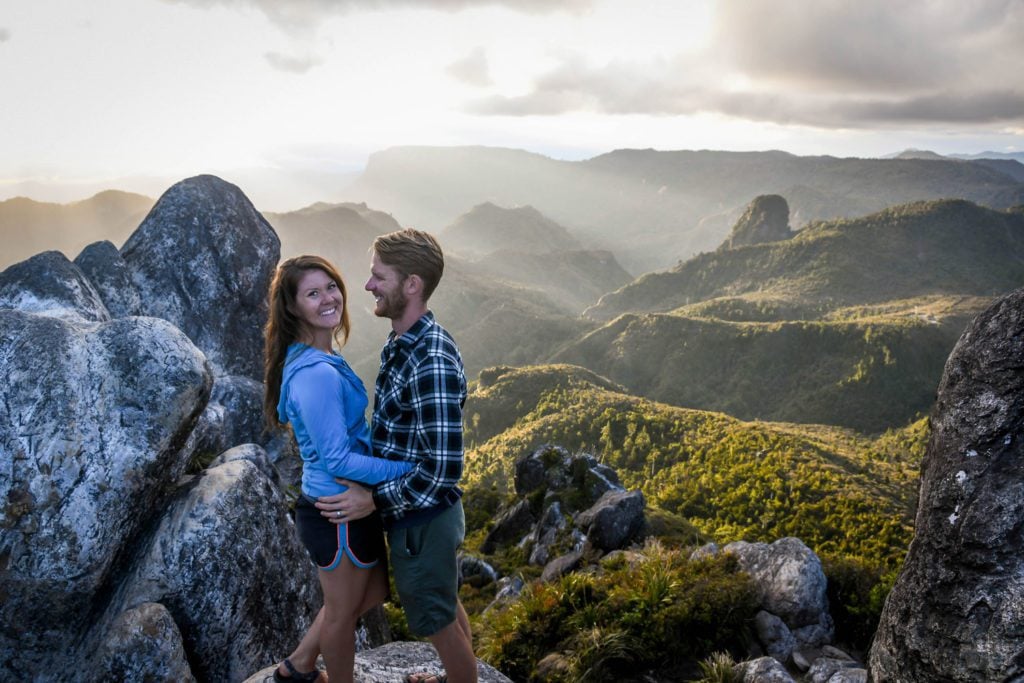
We’re a little obsessed with New Zealand. Okay fine—a lot.
After spending 5 epic weeks road tripping around the country in a campervan, hiking jaw-dropping trails, soaking in hidden hot springs, and eating more pies than we care to admit, we can confidently say New Zealand stole our hearts.
We’ve explored both the North and South Islands—chasing waterfalls, learning about Māori culture, and finding secret spots we still can’t believe exist. And the best part? We documented it all so you don’t have to start from scratch.
Whether you’re planning a campervan adventure or just want help narrowing down the must-do hikes and experiences, we’ve got you. Our guides are packed with practical tips, personal stories, and all the little things we wish we knew before our trip.
New Zealand is seriously one of our all-time favorite destinations—and we can’t wait to help you fall in love with it too.
Preparing to enter New Zealand
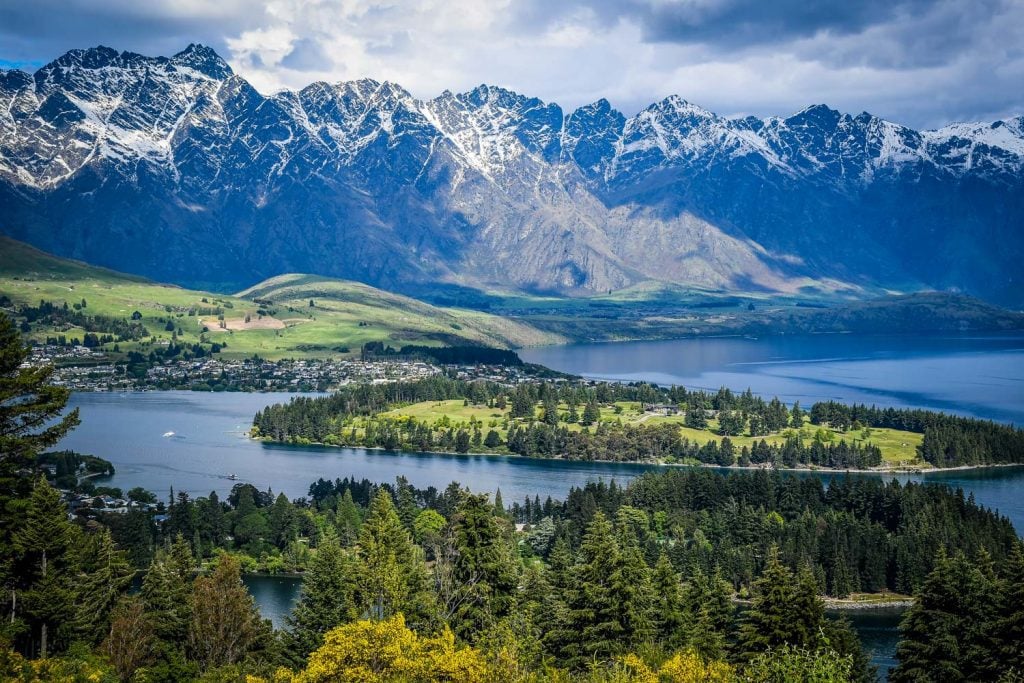
Before we share our helpful New Zealand travel tips, there are some administrative things you need to know before traveling to NZ.
Visas/Documentation needed to enter New Zealand
Okay, so they don’t exactly call it a “visa”, but as of October 1st, 2019 you need to pay to enter New Zealand. Please apply on the New Zealand Government website or using their free mobile app.
The two fees you need to pay before entering NZ are below. You can take care of both of these fees by following the link we provided.
- New Zealand Electronic Travel Authority (NZeTA): cost $17 NZD on the official app or $23 NZD on a browser.
- International Visitor Conservation and Tourism Levy (IVL): Costs $100 NZD for each person entering New Zealand. The fees will be put toward conservation of New Zealand’s land and nature as well as tourism infrastructure. Citizens of Australia and some South Pacific Islands are exempt.
Helpful New Zealand travel tips & advice
We’re sharing some super practical things that we wish we would’ve known before our trip to New Zealand!
1. Learn to speak the language
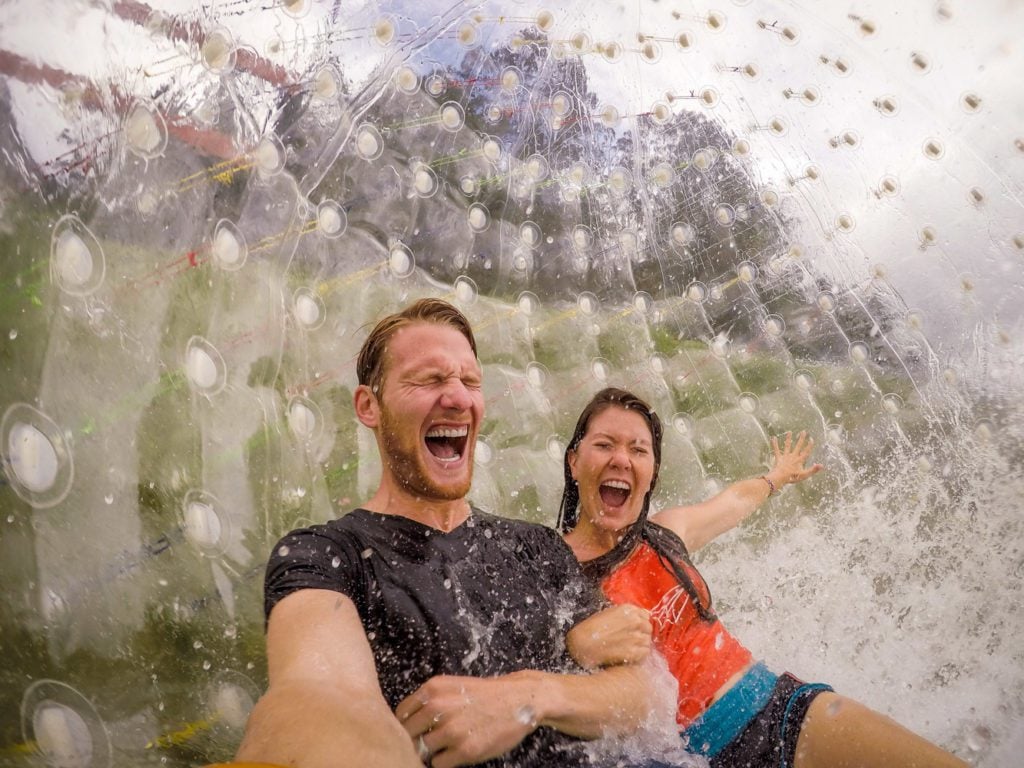
In New Zealand the most commonly spoken language is English… Kiwi English, that is.
For the most part you’ll have no problem understanding locals. But every once in a while, you’ll come across a word or phrase that leaves you scratching your head.
Good to know: Though English is the most widely spoken, there are 3 official languages in New Zealand: English, Māori and New Zealand Sign Language.
Here are some common “Kiwi words” or phrases you may encounter on your travels:
- Kia Ora = Māori word for “welcome”
- Togs = swim suit
- Chilly Bin = cooler
- Sweet as = “that’s cool”
- Dairy = local convenience store
- Tramping = long-distance hiking; usually when you spend the night at mountain huts
- Jandals = flip flop sandals (the name comes from combining Japanese + sandals)
- Wop-wops = in the middle of nowhere (aka “We’re driving through the wop-wops now!”). Can also be shortened to just “wops”.
- Fizzy drink = soda
Oh, and while we’re on the subject, the names for fruits and vegetables may be different from what you’re used to.
Before you head to the supermarket, here are some names to know:
- Capsicum = bell pepper
- Aubergine = eggplant
- Courgette = zucchini
- Coriander = cilantro
- Kumara = sweet potato
- Rocket = arugula
2. Internet in New Zealand sucks!
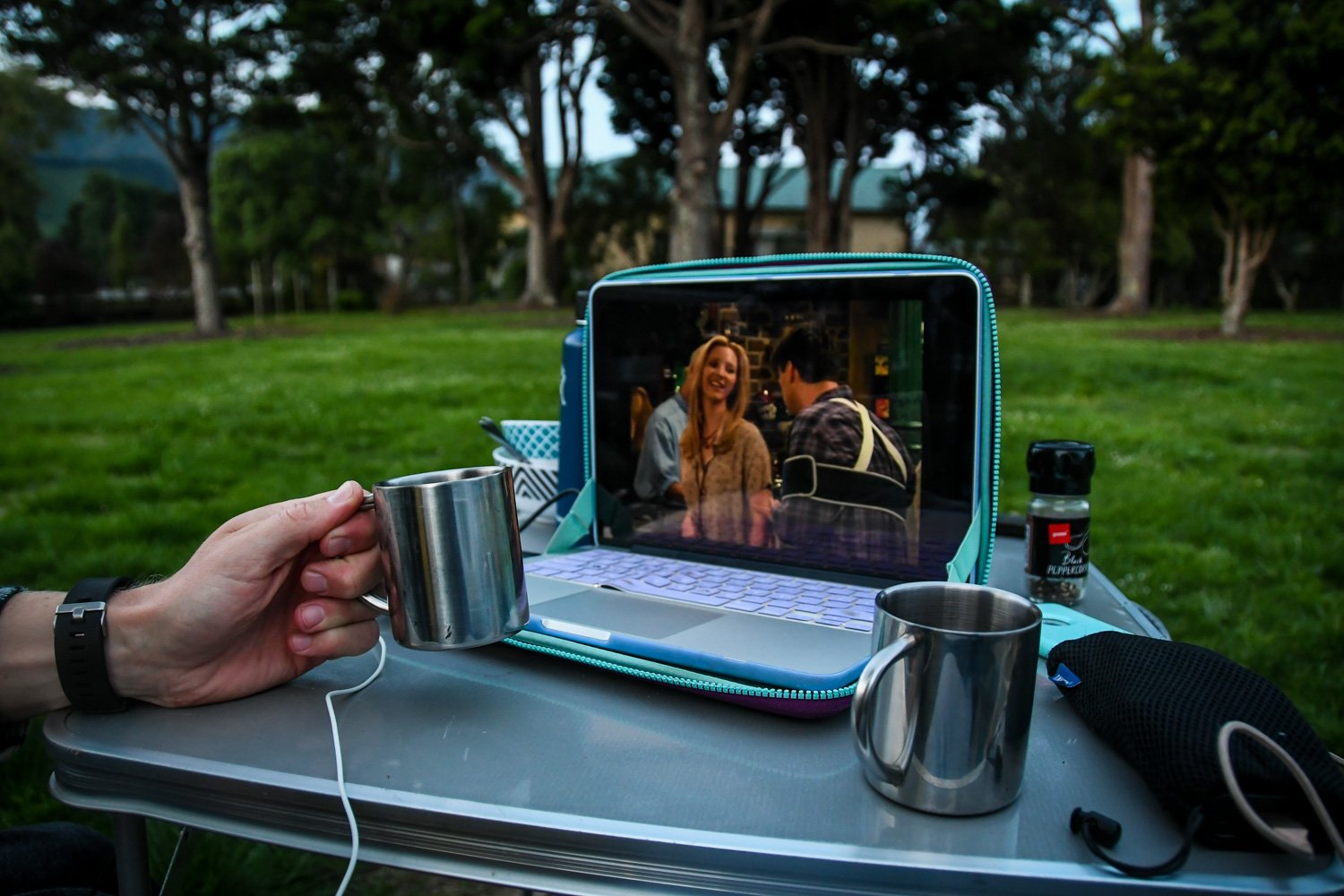
Okay, let me rephrase that… No, it actually does suck, so I’m sticking by it.
You might find cafes, hotels and campgrounds with “free Internet”, but they will likely give you a code that is good for 250 megabytes of data. For all you non-techie folks, that is NOTHING!
We also had a hot spot device and a local SIM card. But even when we did get connected, the speeds were nothing to brag about. Truthfully, we’ve found better service and speeds in several developing countries, so we were pretty surprised by New Zealand’s (lack of) Internet.
I will mention that New Zealand’s North Island has significantly better Internet than in the South (especially in major cities like Wellington and Auckland).
If you’re prepared for limited Internet in New Zealand, you won’t have too much of an issue.
You’ll likely be able to do Google searches, get directions on Google Maps and post on social media. But we had difficulty uploading attachments to emails or loading files. We fell behind on some important deadlines because we simply weren’t prepared.
And when it comes to streaming videos… fogetaboutit! If you want to watch any Netflix before bed, be sure to download those before your trip!
3. Be prepared to go “off the grid”
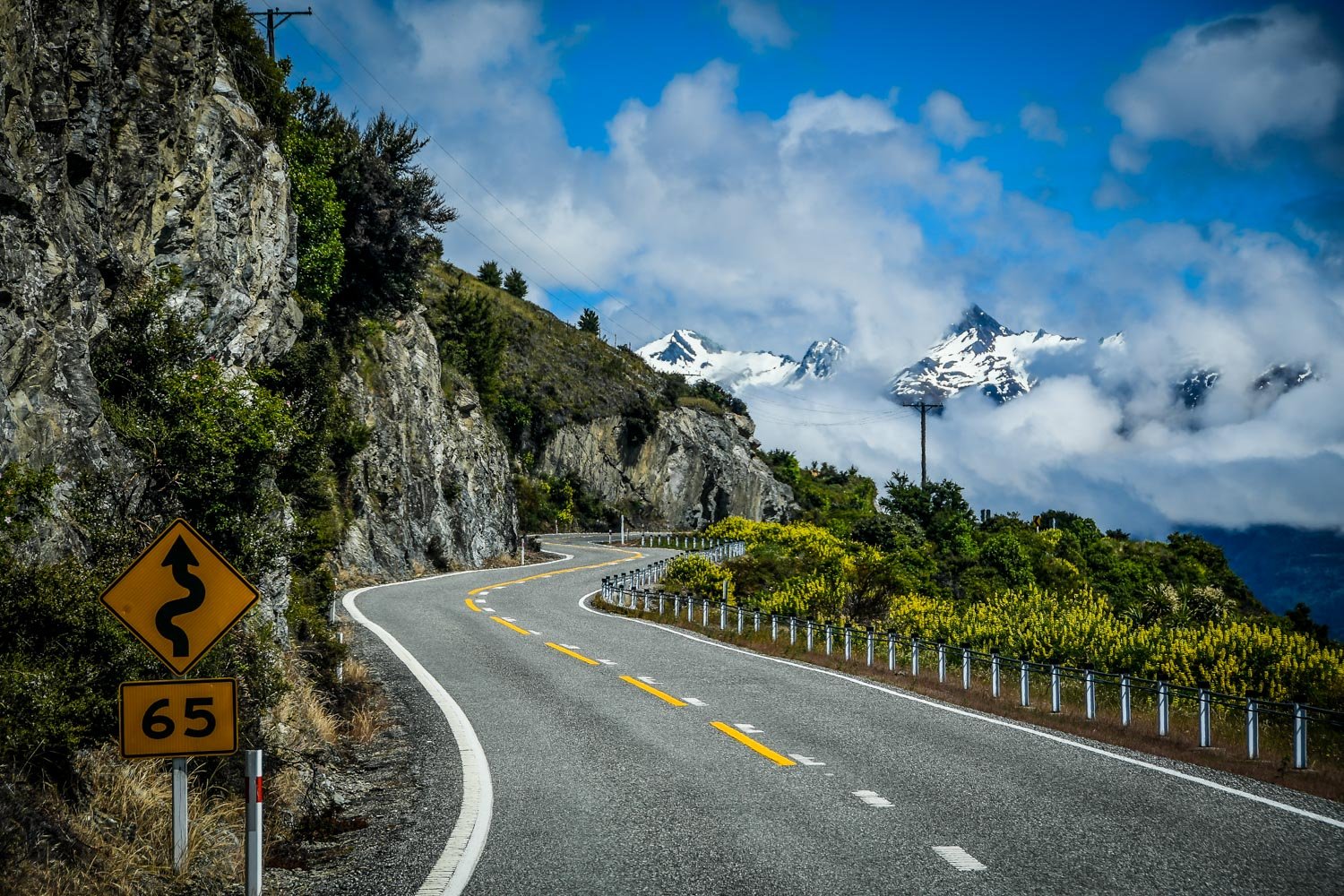
On a similar note, there are many areas where you will not get cell service (especially in the South Island).
I’m pretty sure there was an entire day on the South Island’s West Coast where we had no cell service at all!
Pro Tip: Be sure to download the Google Map of New Zealand on your phone as you’re planning your road trip so you have it even when you’re without cell signal.
4. Put on SPF
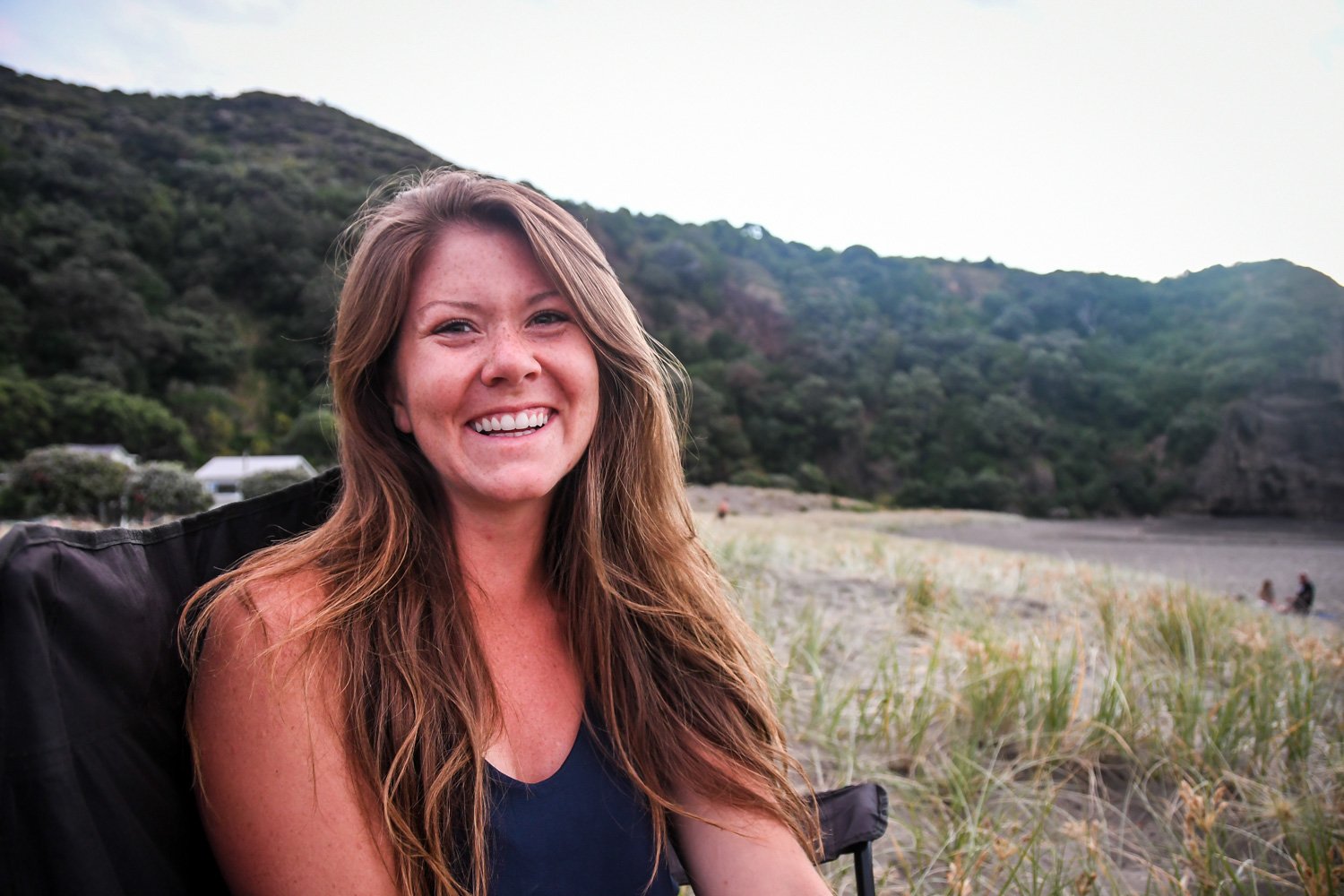
There is a hole in the ozone layer above New Zealand (and Australia), so the sun will burn you more quickly than you may be used to.
Even if it’s not sunny or hot outside, still put on a layer of SPF to protect your skin. After hearing one too many Kiwis telling us about their infamous “5-minute sunburns”, we made it a routine to slather up.
5. Customs are strict
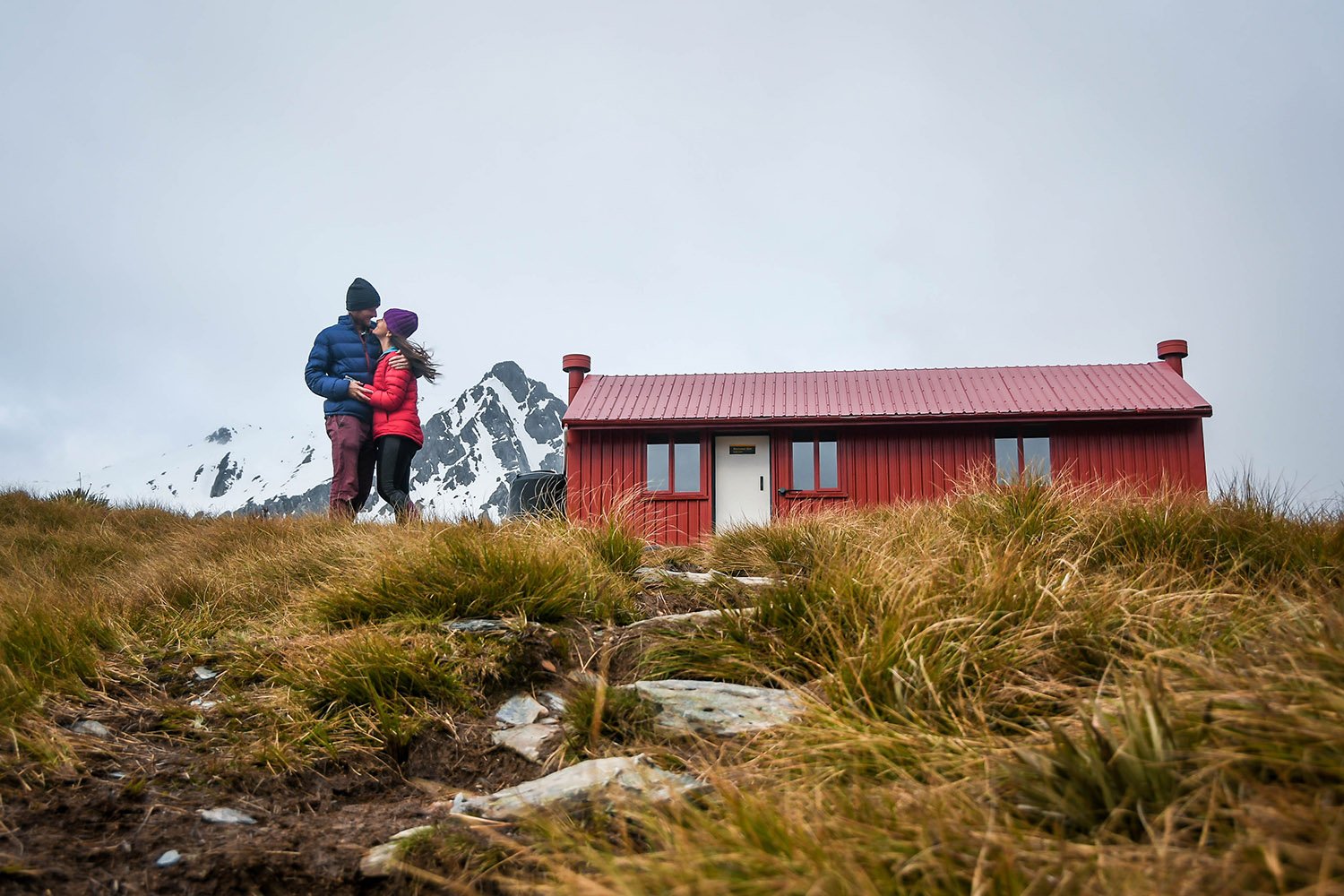
Like really, really strict.
One of the first things you’ll see when you get off your plane is signs everywhere warning that you’ll be fined if you bring any food into the country.
Basically, you can’t bring food into New Zealand.
So here’s the thing… We had packed some food that we thought would be good for camping meals: oatmeal, quinoa, cinnamon, curry packs, sea salt…
But when I saw a picture of an apple accompanied by the words “$400 fine”, I turned myself into the customs officer, worried I might be handcuffed for such a rebellious act. Only kidding… or am I?
She looked at me asked a few general questions in a monotone voice. “You’re fine. Keep walking,” was her response.
You are also not supposed to bring “dirty” shoes and camping gear into the country.
There are even signs posted informing you that dirty shoes are not allowed in the country. (We didn’t see anyone reprimanded for this, though they did ask us if we had “previously worn our shoes”.) And at some trailheads, there are cleaning stations for hikers to clean their shoes before entering.
Why all the strict rules?
It might seem a bit over the top, but New Zealand is an island nation with a fragile environment. There are many endemic plants that can be easily harmed when non-native species are introduced.
You’ve been warned. And now that you know the reason behind it all, please respect the rules.
6. Weather in New Zealand is crazy
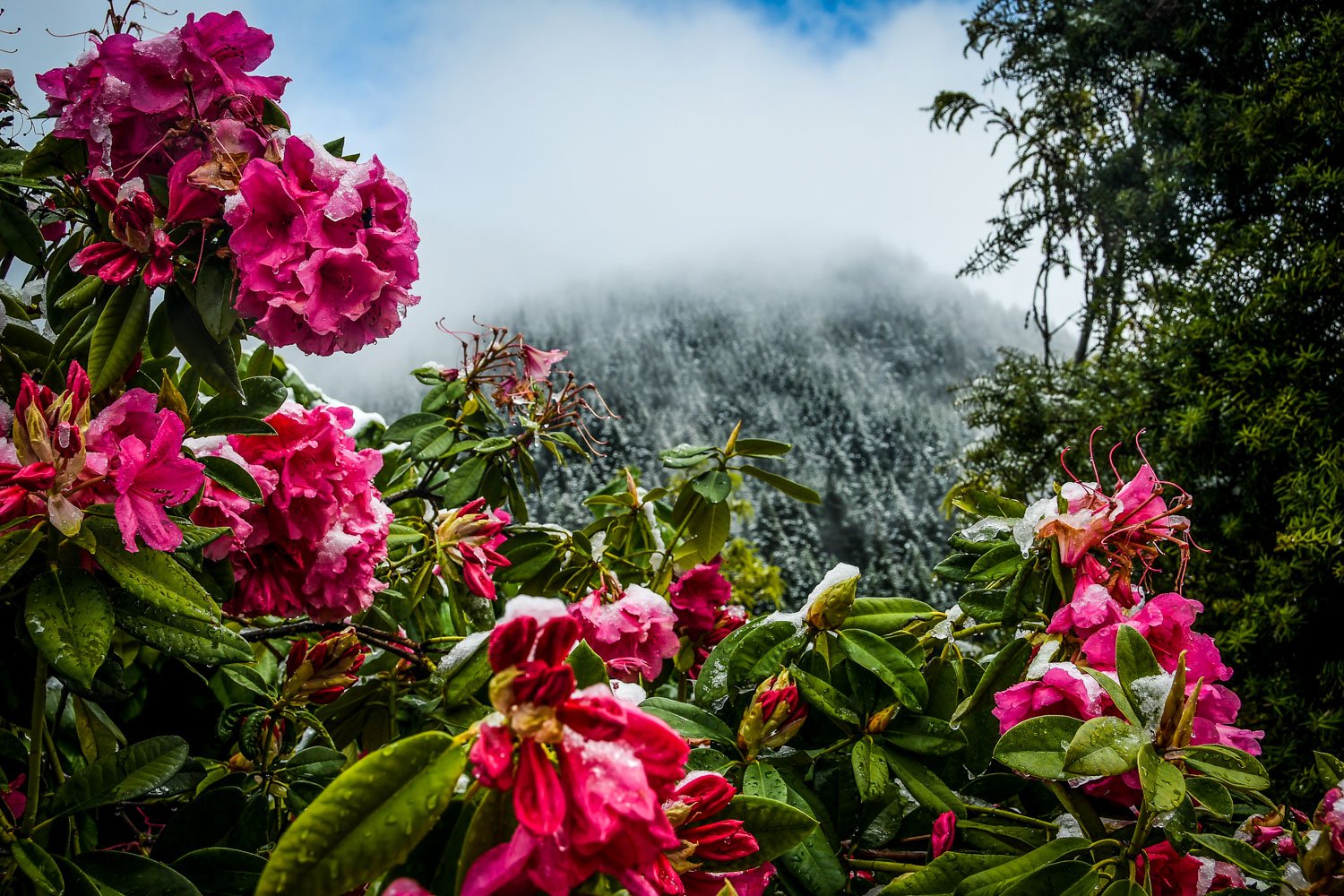
It changes often, and one town to the next can be totally different.
In just one day, we experienced snow, rain and sunshine. Be prepared by packing lots of layers and a rain jacket.
And be sure to add some “flex days” into your itinerary because a surprise rainstorm might mess up your plans. We speak from experience.
→ Psst! For an in-depth guide on the seasonal weather patterns and other factors, check out our complete guide on the best time to visit New Zealand.
7. Travel by campervan
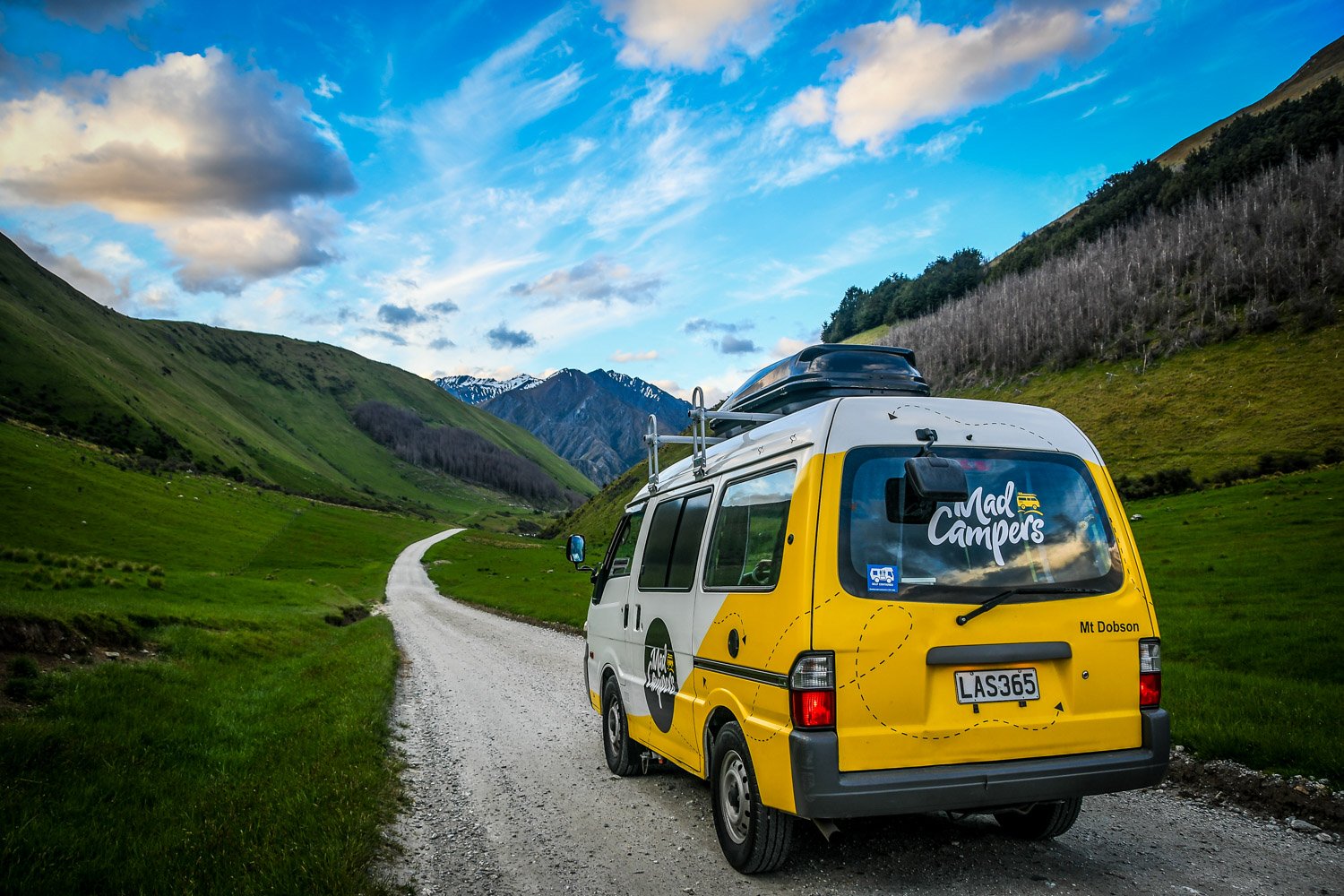
The secret is out: Traveling by campervan is unarguably the best way to explore New Zealand. There’s just so much more you can see when your home is on wheels.
Plus, if you’re on a budget, you will have the opportunity to save money by cooking your own meals and freedom camping.
Insider Tip: If you’re looking for campervans in New Zealand, check out this article where we compare the best companies in the country to help you find the best vehicle for your budget and needs.
8. You can camp for free!
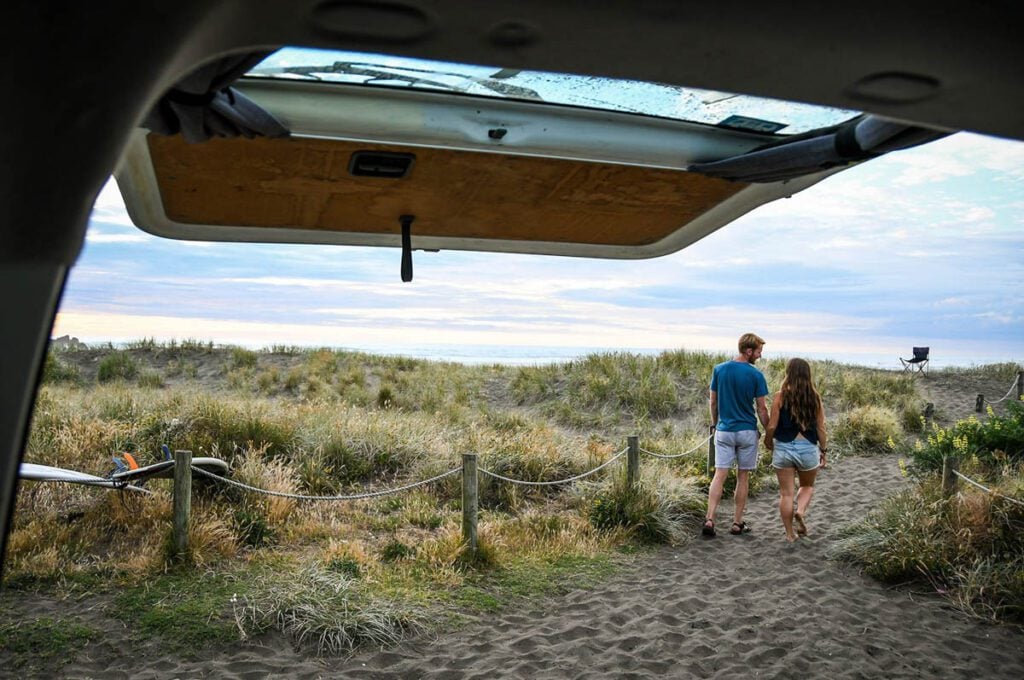
If you’re traveling New Zealand in a campervan, you can camp for free in many places throughout the country. Freedom Camping is a great way to get off the beaten path and also save money!
There are free campgrounds and also regions where you can simply find a place to park and set up camp.
Note: You need to have a self-contained vehicle. Read up on the rules on Freedom Camping.
We’ve put our heads together with fellow travel bloggers and came up with a list of the best campsites in New Zealand, some of which are free! It’s a good resource for anyone looking to do some campervan adventuring in this country.
9. Add time to what Google Maps tells you
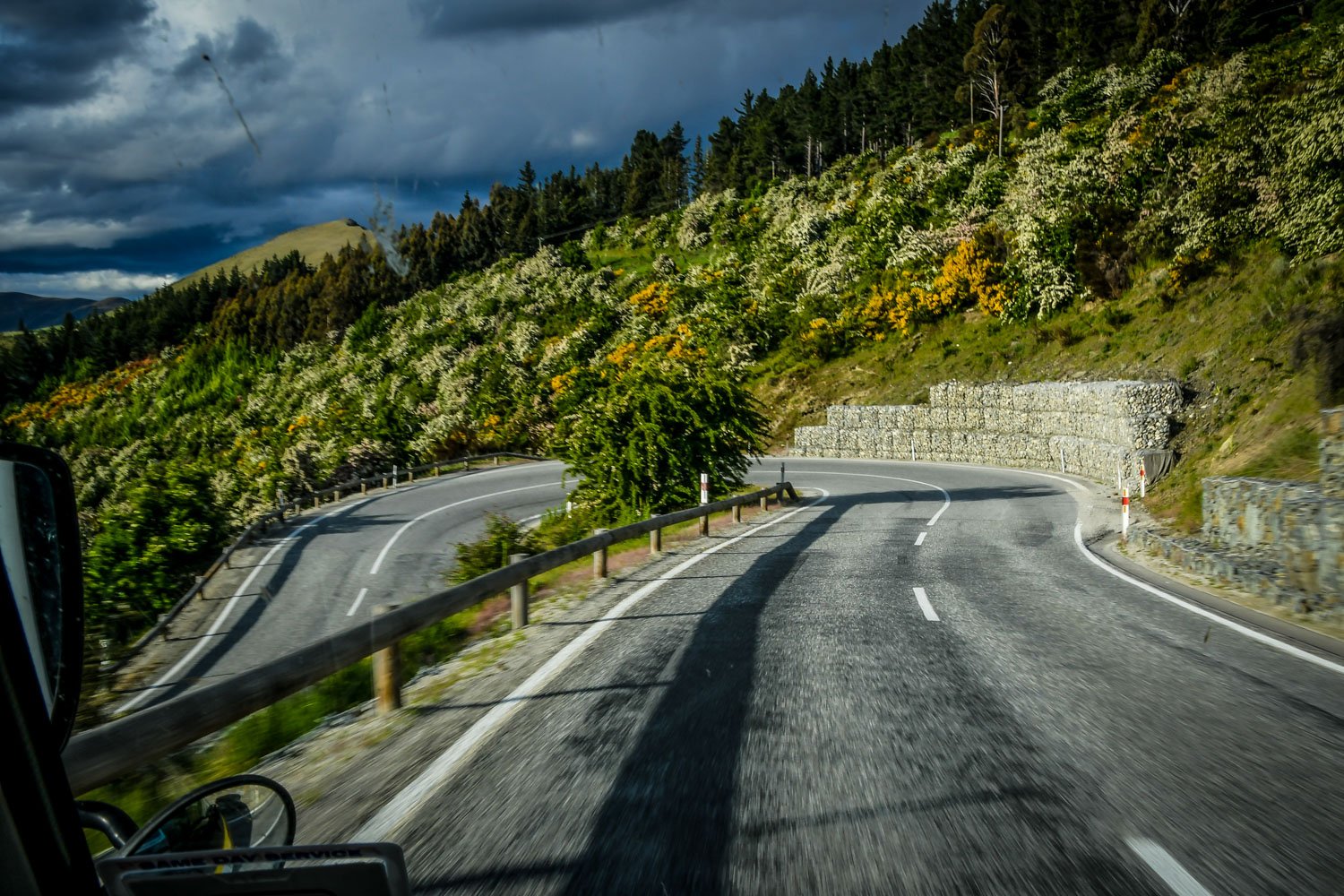
Seriously, do it. Google knows nothing (when it comes to NZ roads)!
Roads tend to be quite narrow and in many places in the South Island, there is only one lane in each direction.
Take into account the hairpin turns, one-lane bridges, gravel stretches and steep mountain passes, and you’ll understand why it takes longer than you’d expect to drive just about anywhere.
And that doesn’t even set aside time for all the gorgeous viewpoints where you’ll want to stop. They are everywhere, I tell ya!
→ Psst! While you’re at it you might want to read up on our tips for driving in New Zealand.
10. Let people pass you
When you’re driving in New Zealand, it’s the law to pull over (when safe) if there are more than 4 people backed up behind you.
Locals can (understandably) get a bit put off when they are stuck behind large campervans, and you might get some tailgaters.
Don’t let it get to you – just pull over at the nearest safe spot and allow those behind you to pass.
11. Beware of one-lane bridges
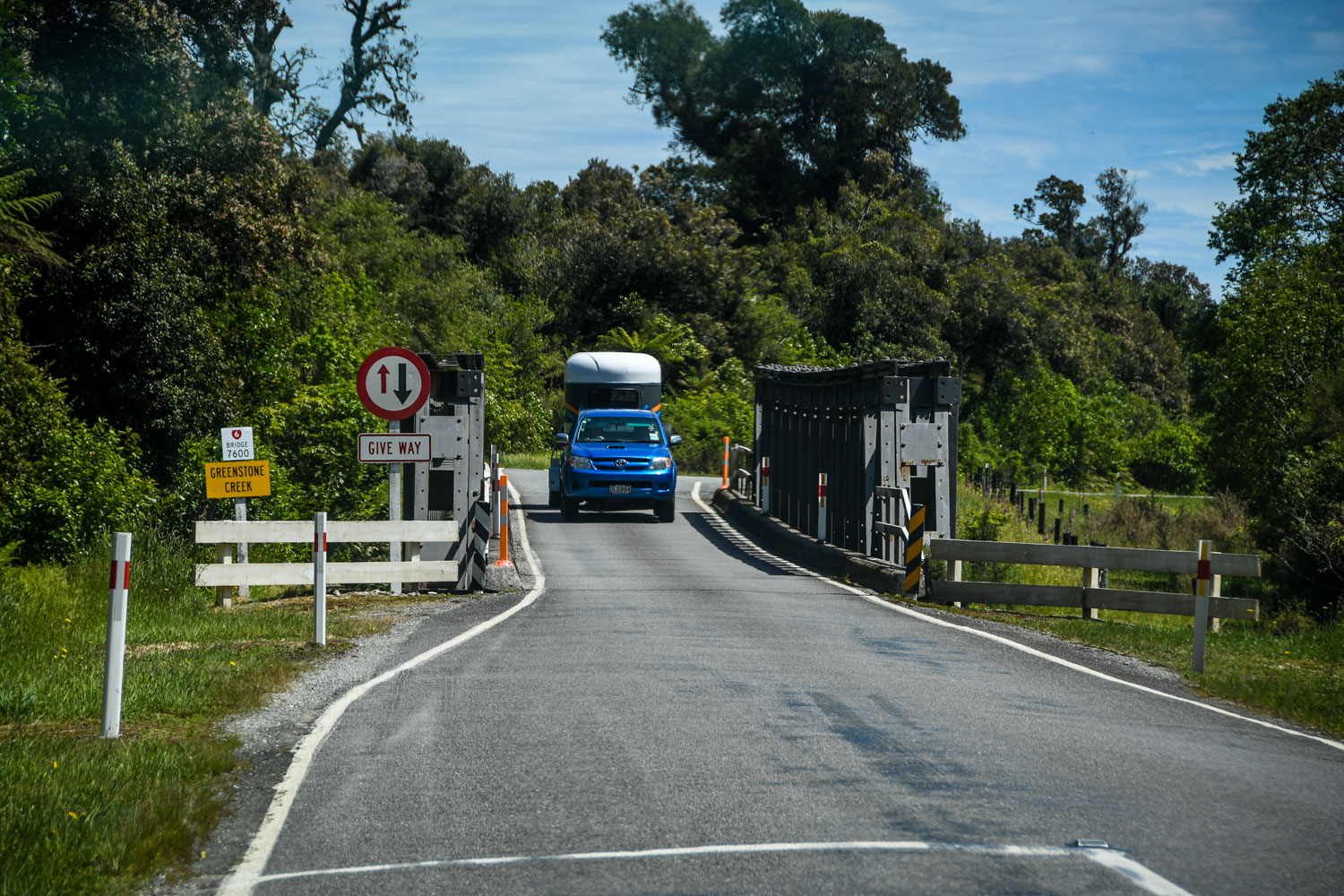
Hopefully you’re already aware that in New Zealand people drive on the left-hand side of the road. We were prepared for this, but what we weren’t aware of are the one-lane bridges.
Most bridges you’ll find around the country are only big enough to let one vehicle cross in either direction.
When you approach a bridge, make sure to slow down and read the signs — typically it indicates which side gets the right of way. But it’s always a good idea to be prepared to yield in case the other driver isn’t being cautious.
12. Gas is expensive!
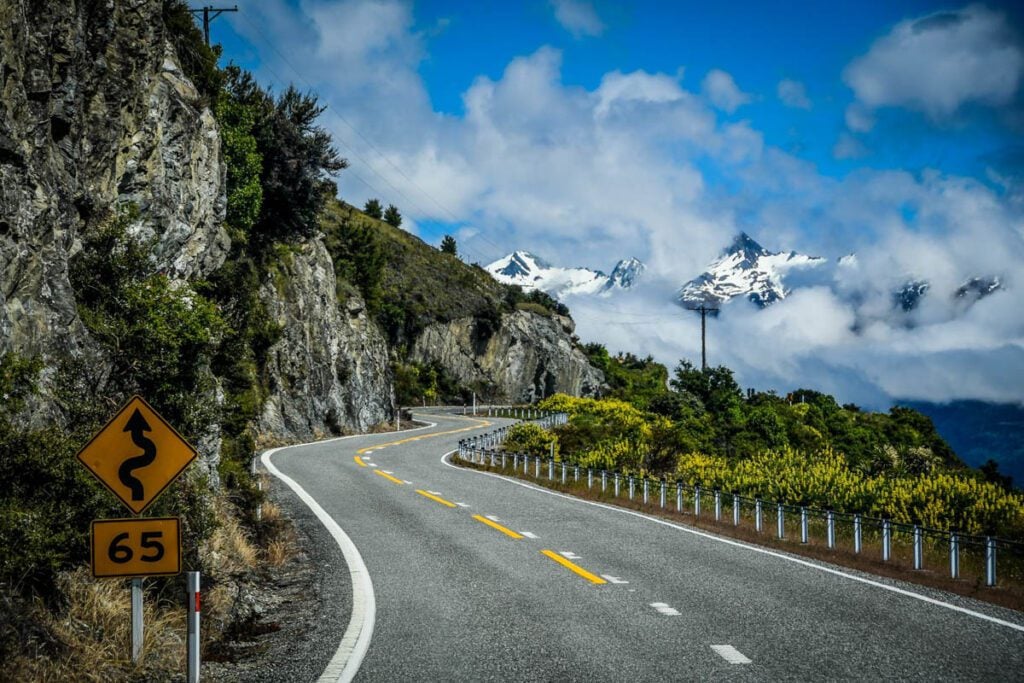
New Zealand is known to be notoriously expensive. But honestly, there are many things that surprised us. Groceries, for instance, were quite similar (if not a bit cheaper) to what you’d find in the United States. Definitely not as bad as we were expecting.
But gas is another story. It’s hella expensive. (Did I just say hella?)
The gas station signs are a bit deceiving…
Here’s what happened to us (fellow Americans will understand!): Our first day, we saw a reasonable price (NZ$2.25) advertised on a gas station sign and we were like, “heck yes!” and we swerved to pull over to fill ‘er up…
But here’s the thing: That price is for one LITER. That’s 1/4 of a gallon, folks. That means each gallon of gas at that station cost us NZ$9 (or $6 USD).
Let’s just say that filling up the tank on our campervan made my eyes water.
And that was just an average station. In more remote parts of the country, like the South Island’s West Coast, prices were quite a bit higher.
Now ya know. Budget accordingly.
→ Related Reading: Are you traveling to NZ on a tight budget? Don’t worry, we’ve put together our top money-saving tips for New Zealand on a budget.
13. When you need something, go to The Warehouse or an OP Shop
This “big box store” is essentially New Zealand’s version of Target or Walmart.
You’ll find The Warehouse in just about every decently-sized town, and they carry everything from clothing to toiletries to snacks and camping gear.
Now, it’s not the highest quality stuff you’ll find — I mean, I compared it to Walmart! But if you’ve forgotten to pack something, you’ll likely find it here, and it won’t spoil your budget.
Also, fun fact: K-Marts are bankrupt in the US, but they are BUILDING them in New Zealand. Who wudda thunk!?
Even better than The Warehouse, is finding an OP Shop (aka thrift store). We kind of missed these when we were traveling in NZ (which makes us really sad because we love a good 2nd hand shop!).
We’ve been told that a favorite of many travelers on the South Island is Wanaka Waste Busters. One reader told us, “I find cheap merino shirts and barely used outdoor gear all the time. Often under $10!” So if you’re in the area and need something, give it a go.
14. Sandflies are bad (like really bad)
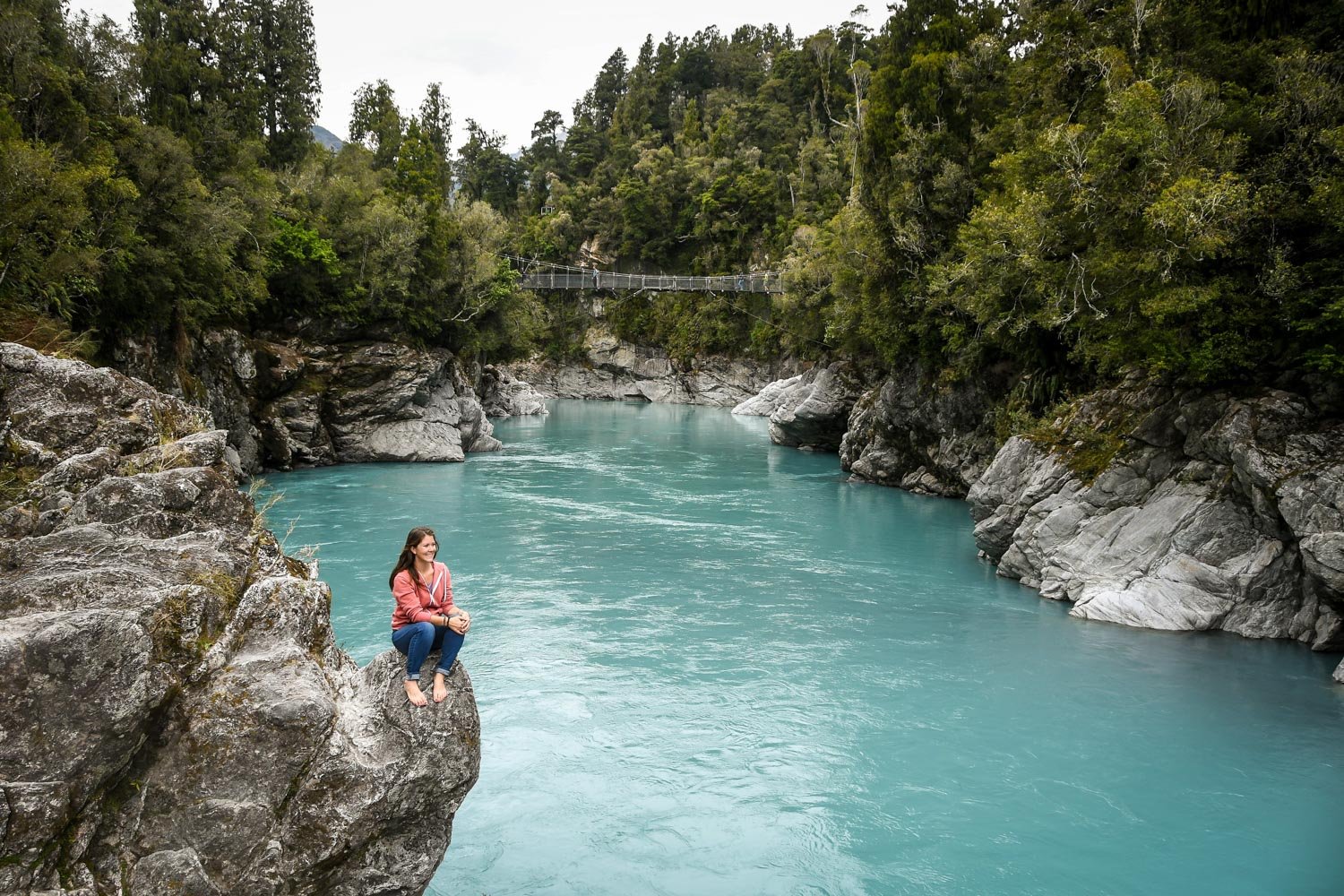
We’ve traveled to places where people complain about sandflies, but I don’t think I’ve ever had a sandfly bite in my life. Until New Zealand.
While they live in most parts of the country, we found them to be worst in the South Island — on the West Coast in particular.
How to prevent sandfly bites:
They tend to come out around dusk, so be sure to cover your skin as much as possible. And for any exposed areas, you can apply a bit of baby oil (or other type of oil), as they can’t bite through this slippery layer. Oh, and they don’t live in the sand. They get their name from their sandy brown color.
15. Know about Working Holiday Visas
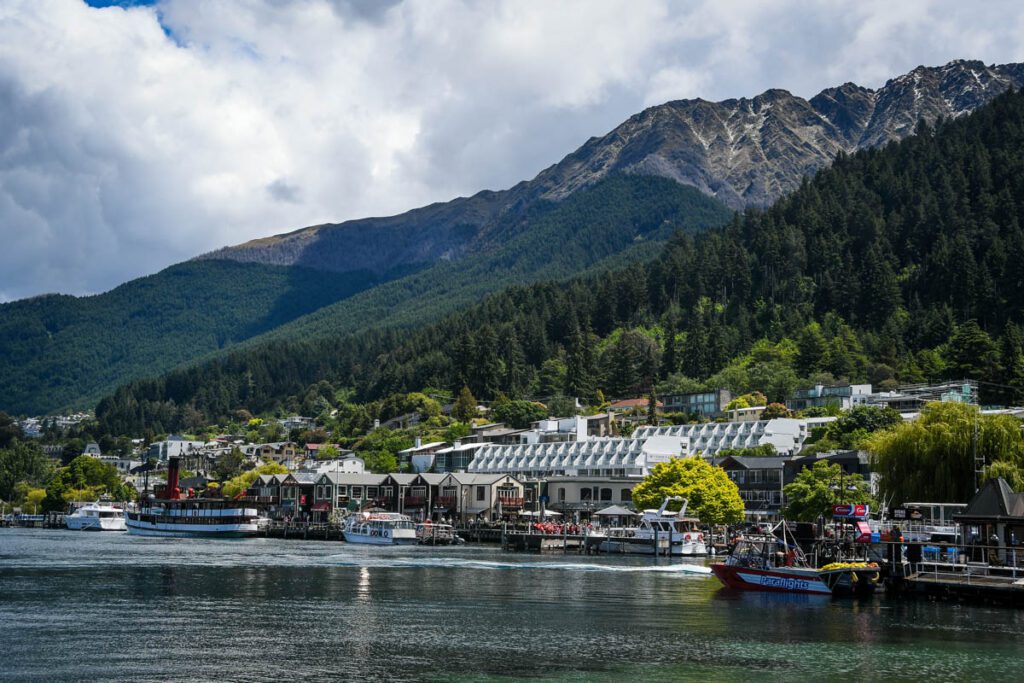
You might notice that a lot of the people behind counters at coffee shops and tour operators don’t have a Kiwi accent… And that’s because they’re probably not from New Zealand at all!
New Zealand is a super popular place for young people to do Working Holiday Visas. This essentially means they can live in New Zealand for 1-2 years (depending on their nationality) and hold a job.
Jobs in the service and tourism industries are easy to get, so your waitress, barista or tour guide might not actually be a local at all; but a foreigner, just like you! However, just because they’re not a native New Zealander doesn’t mean you shouldn’t ask them for local advice. Often times they have great tips because they recently moved to New Zealand and have had a chance to explore the hot spots and hear about the hidden gems.
On a related note… This means that if you fall in love with New Zealand (let’s be real, WHEN you fall in love with NZ!), you can move there for a year or two… My brother did it! And he helped us create this handy guide: Everything You Need to Know about Getting a Working Holiday Visa in New Zealand.
16. Tipping isn’t necessary
Unless you receive exceptional service, it’s not compulsory to add a tip. And in some restaurants, a service charge will already be added to your bill, so there’s no need to add any extra cash.
17. Prices will always be rounded
The smallest coin in New Zealand is a 10-cent piece, so the total cost will always be rounded up to the nearest zero.
18. Sales tax is included
Whatcha see is what you get. There is sales tax, but it’s included in the price you see so there are no surprises when you get your bill.
19. Wine is cheap (& fantastic!)
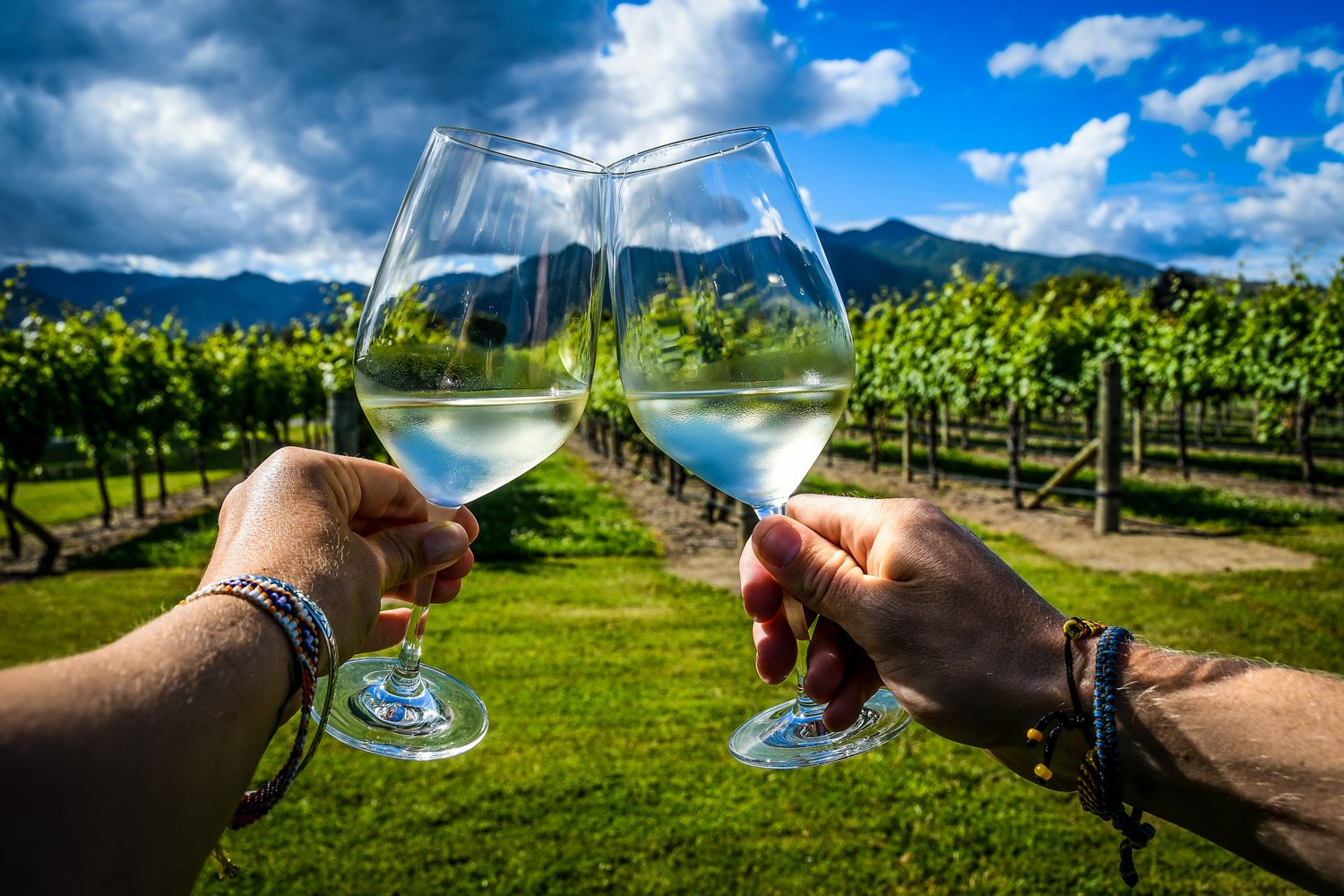
After spending a lot of time in Asia, we were so excited to be in a place where wine was good (and didn’t cost more than our accommodation!).
If you like wine, you’ll love traveling in New Zealand. We consistently found great wine for less than $5 USD.
However, if you’re more of a spirit or beer drinker, I hate to break it to you, but you’ll need to allocate a bit more money to your alcohol budget.
We found that ordering beer in a brewery or restaurant was the price we’d expect (around $5-8 USD for a pint), but buying it at the liquor store was much more expensive than we were used to in the US.
20. Carry your passport to buy alcohol
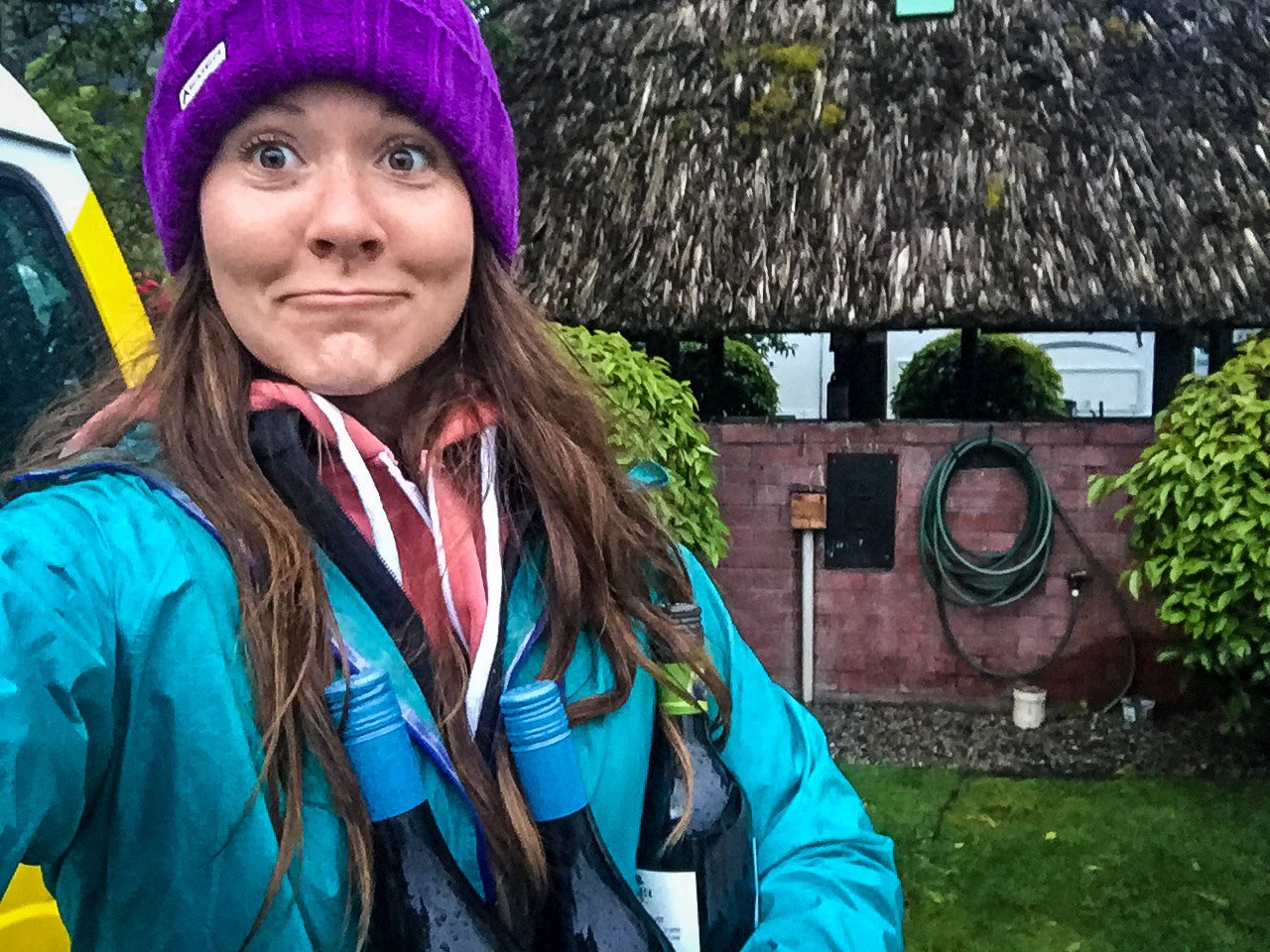
And while we’re on the topic of adult beverages, be sure to bring your passport with you to the grocery store if you plan to purchase any alcohol.
While my 30-year-old self was flattered the first time I was asked for ID in a country where the legal drinking age is 18, it gets OLD. I just want a bottle of cabernet, damnit. The policy at many stores is to card anyone who looks under 40 years of age.
Remember to bring your passport with you and save yourself from running through the parking lot while all the other customers in line stare you down.
Oh, and for the record, an out-of-country drivers license does not count as an ID. Trust me, I’ve tried… and failed.
21. Eating out will eat your budget
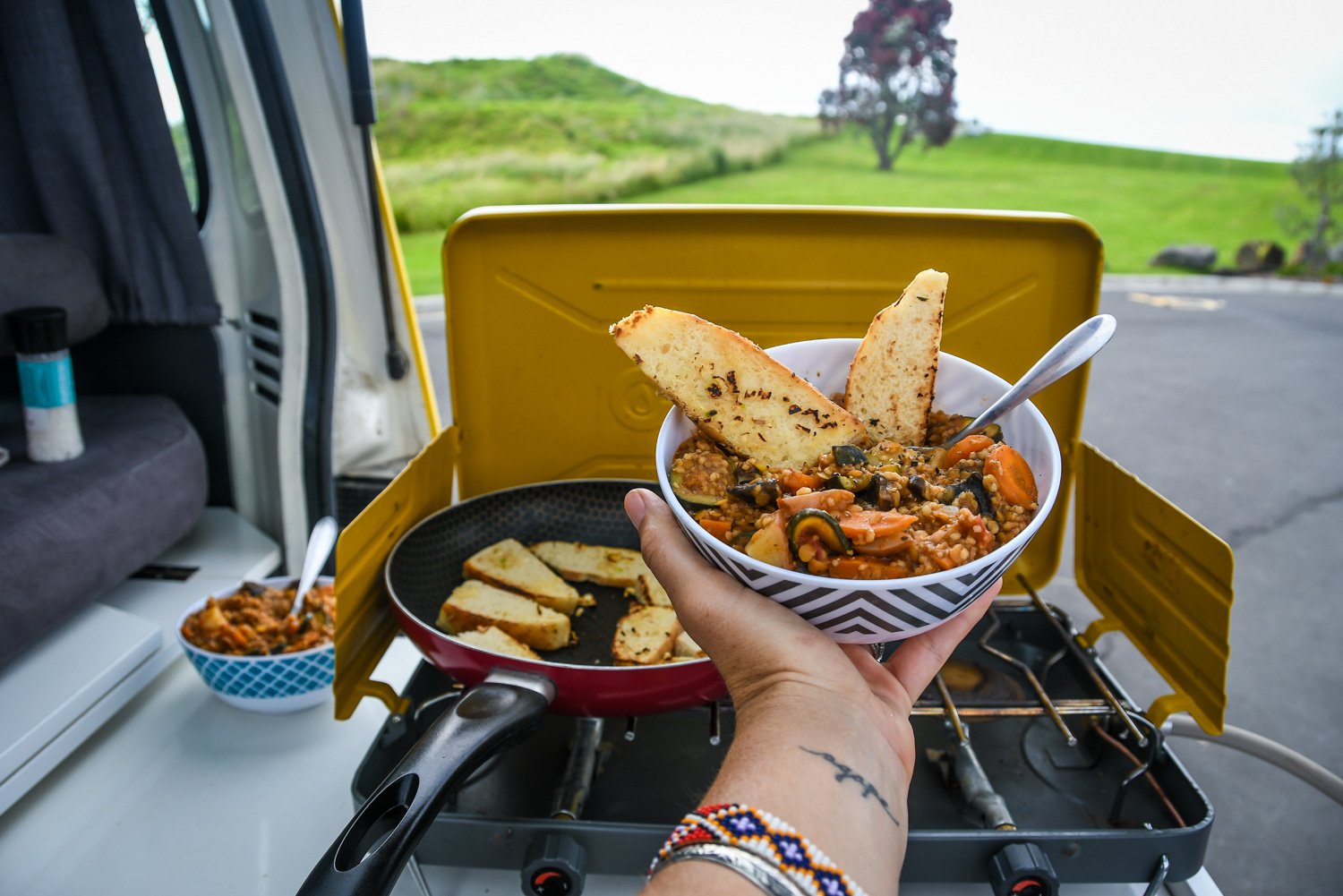
Meat pies or fish and chips shops are your best best for some quick and cheap food. But I don’t know about you, but my body can’t handle fried fast-food every day. So if you’re in search of a salad or sandwich from a proper sit-down restaurant, meals can be quite expensive!
In order to stick to our budget, we limited the amount of meals we ate out, and cooked a lot instead. Just another perk to traveling in a campervan!
→ Related Reading: Check out this list of our favorite campervan meals. They’re all cheap, easy and healthy — what more could you ask for?!
22. Drink the water
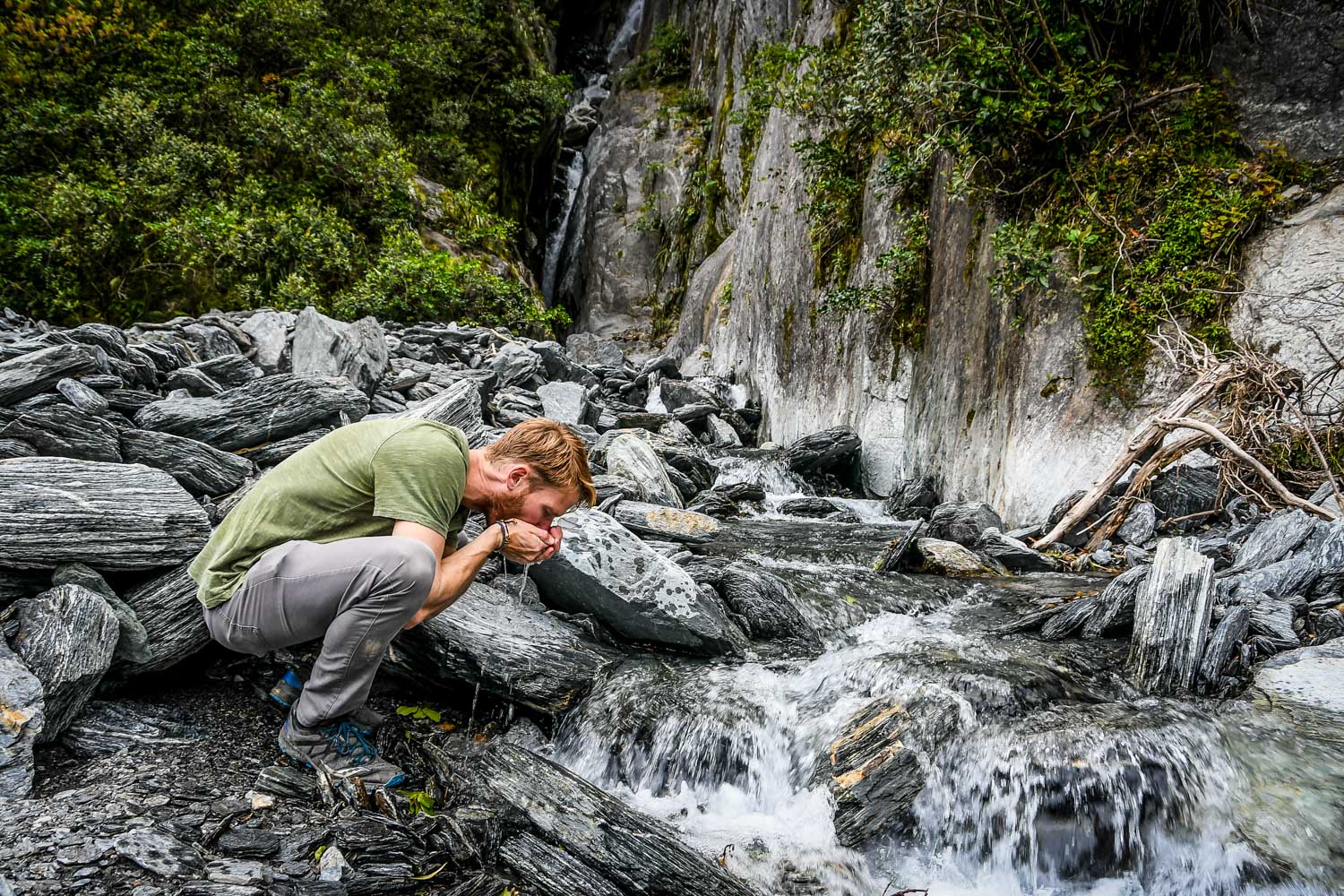
Tap water is safe to drink in New Zealand, folks! And it is delicious (especially in the South Island).
I mean, you’re basically drinking from a glacier. So there’s really no reason to by the bottled stuff.
So bring your reusable water bottle and fill ‘er up!
23. It’s easy being “green”
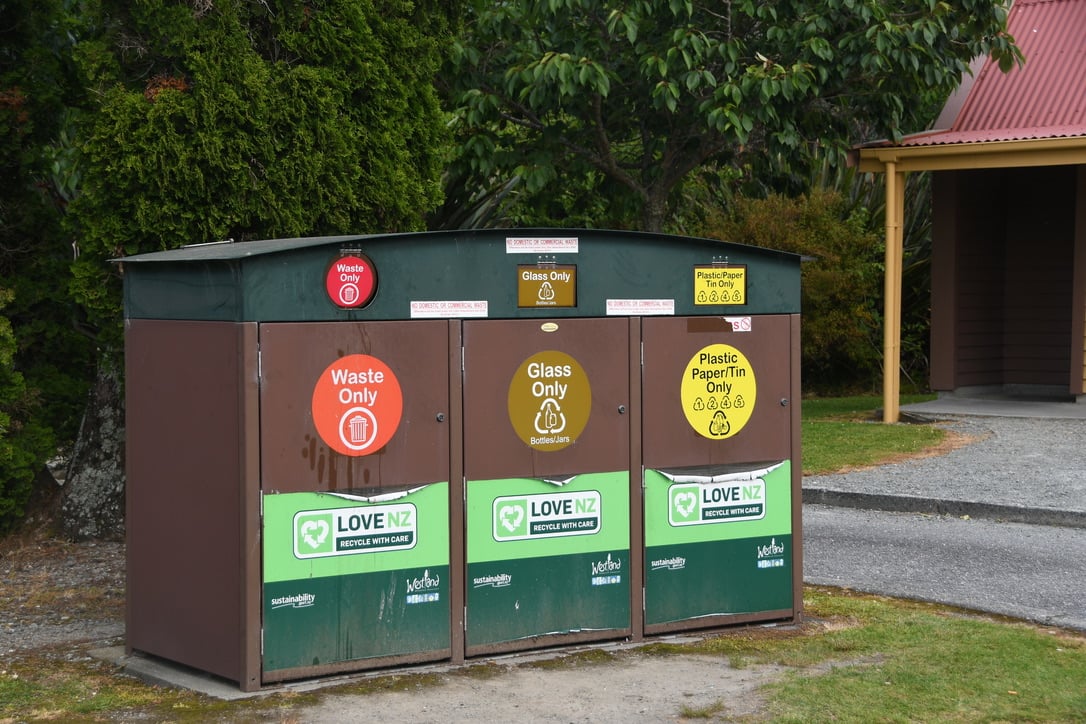
We were pleased to notice the efforts being made around New Zealand to reduce waste and separate it properly.
In many grocery stores, you’ll pay extra for plastic bags (so pack your own reusable ones!). And you’ll get a nice discount (sometimes 50 cents!) when you bring your own cup to coffee shops.
It is also quite common for trash bins to be separated into plastics, glass, metal, and organics.
24. Those are JADE necklaces you see everywhere
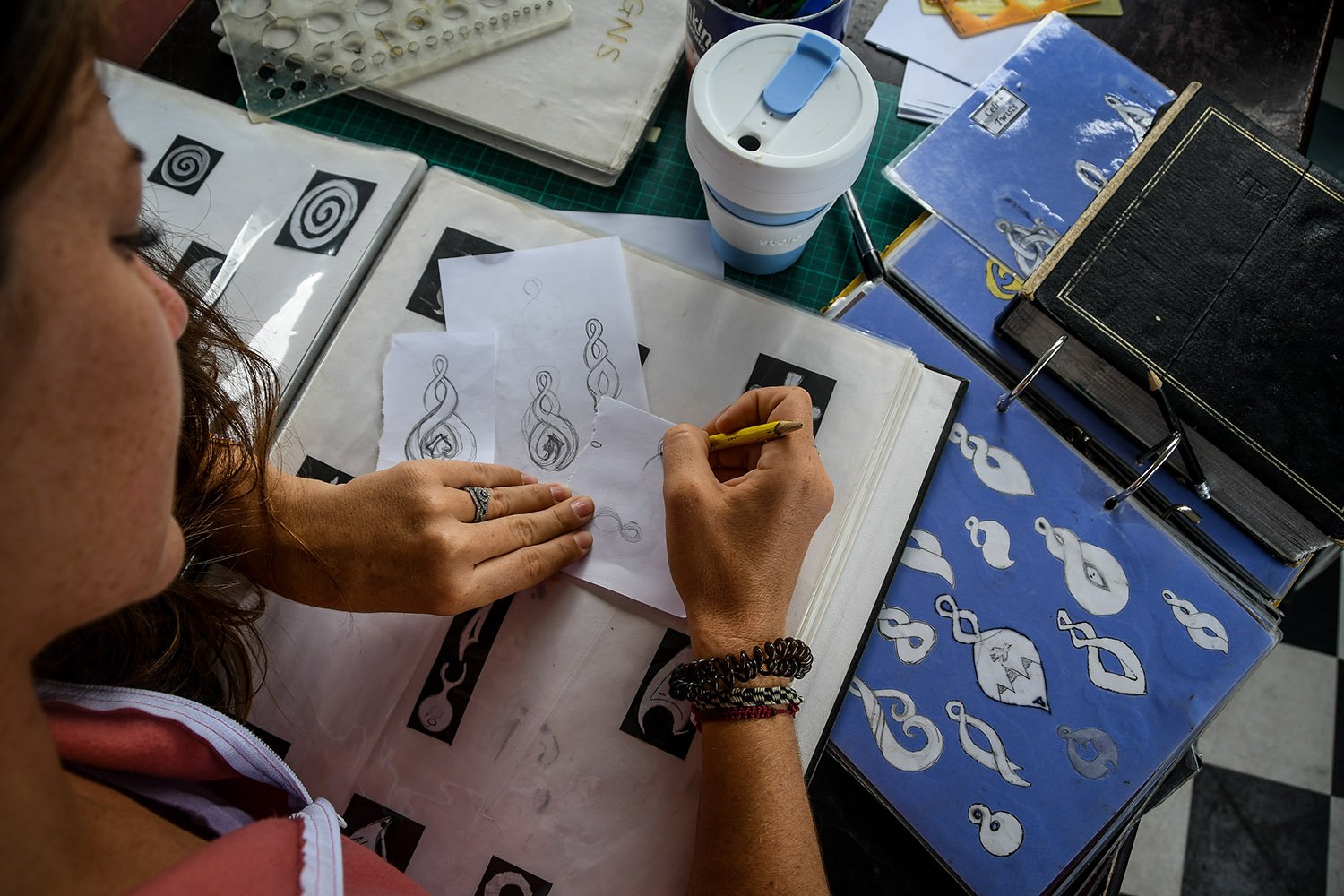
It won’t take you long to notice the stone necklaces around people’s necks and in souvenir shops. They are made from New Zealand jade, or greenstone, and are often carved following traditional Māori designs.
These are a common gift for Kiwis to give to visitors, and they make a popular souvenir. You can even carve your own jade necklace, like we did!
25. Kiwis take their coffee seriously
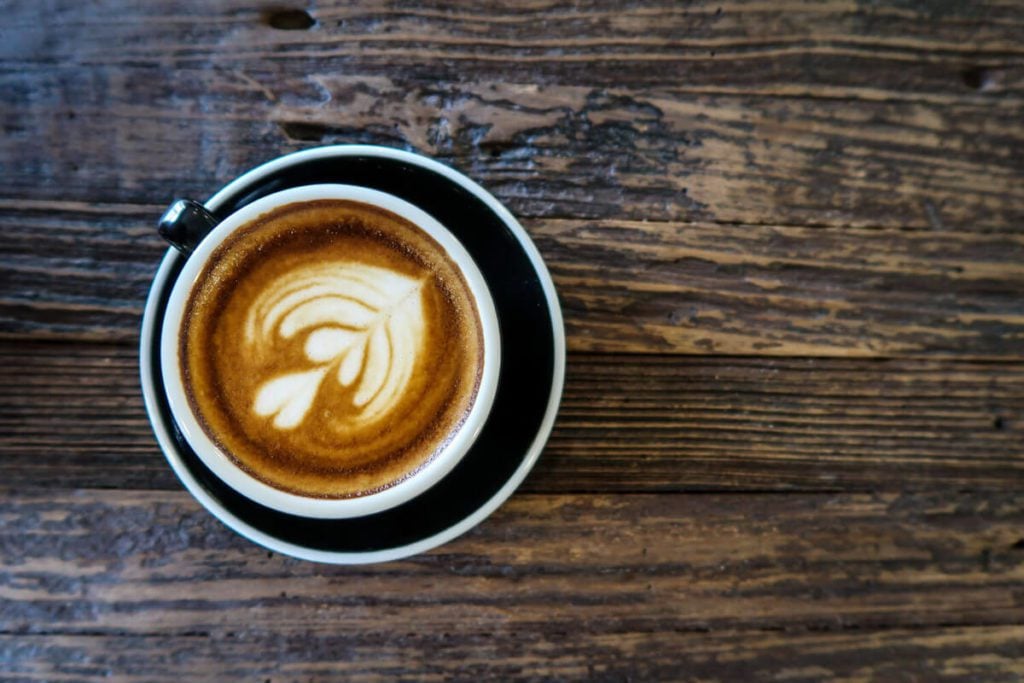
We are huge coffee fans, and we’re pleased to find a great selection of our favorite morning beverage all over the country. Even in remote areas with no cell service. (Priorities!)
You won’t easily find drip coffee in New Zealand, so instead, order a long black, which is essentially an Americano (espresso plus hot water).
Or go for the Kiwi favorite: a flat white (a stronger version of a latte). It is said that a New Zealander invented this ultra-popular coffee drink, but an Australian man disputes this claim and says it was he who came up with it.
Regardless of who was first, it is delicious, so give it a try!
26. There’s a rivalry with Australia
Speaking of Australia… there is a bit of a rivalry between the two countries. Just tell a Kiwi they sound like they’re from Australia and you’ll see what I mean. (Actually, don’t do it, just trust us on this!)
It’s all in good fun (for the most part!). Except when it comes to rugby. Then it’s a different story.
27. Try flavors you won’t find anywhere else
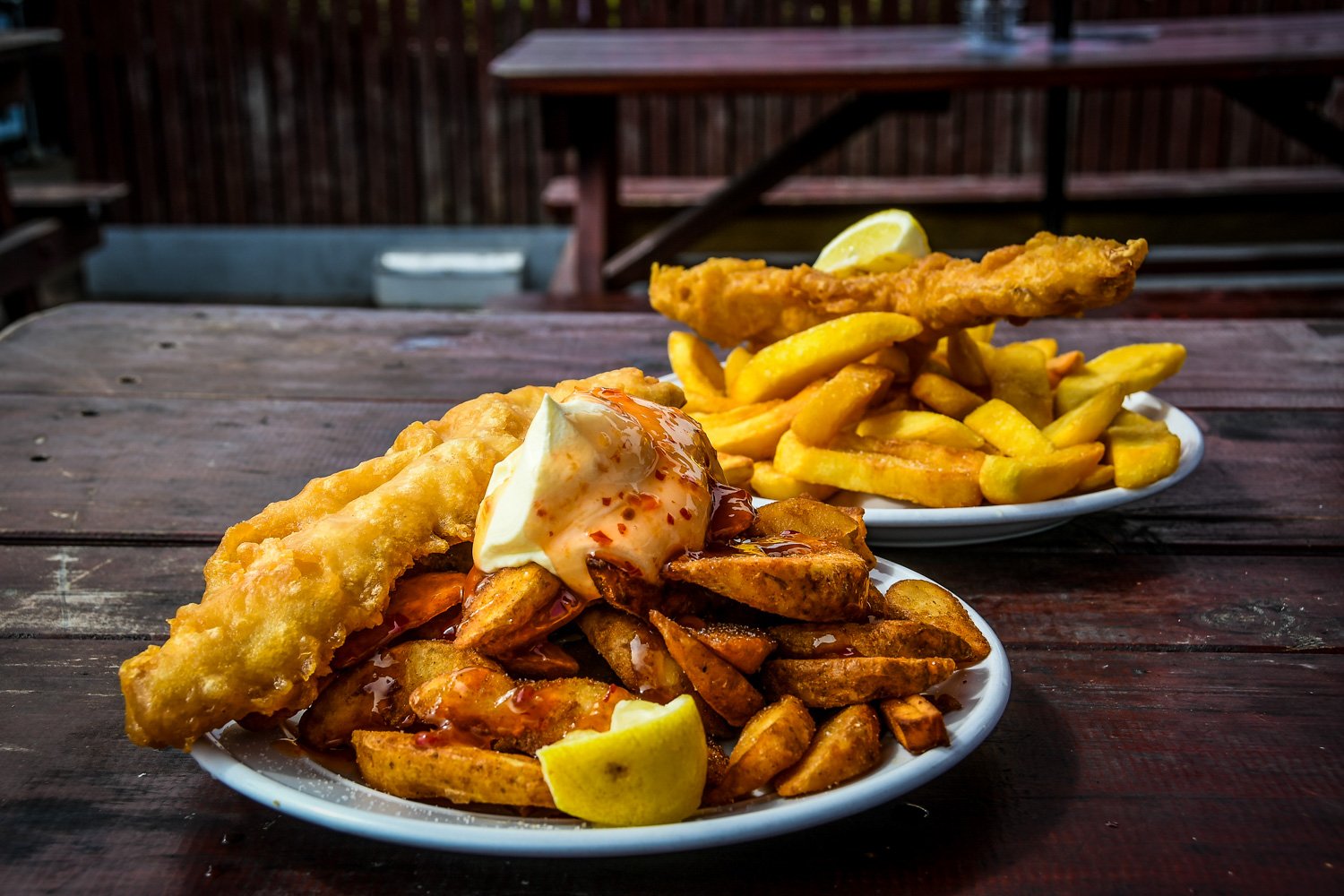
While Kiwi cuisine isn’t anything too special — think of it as similar to what you’d find in the UK or US — there are some unique flavor combinations we haven’t seen anywhere else in the world.
- Fries (or hot chips, as Kiwis say) with sour cream and sweet chili sauce: This is a popular option we found all around New Zealand, and hot damn, it’s good. Like, why isn’t this always an option? (See photo above to make your mouth water!)
- Kiwi Pavlova: It’s debatable whether this is from Australia or New Zealand, but regardless, it is a delicious dessert with meringue, whipped cream and fruit (usually kiwi!). Sometimes you can find this as an ice cream flavor too
- Hokey Pokey Ice Cream: Caramelized honeycomb flavor
- Kiwi Burger: Sold at McDonalds and other restaurants, this burger is on another level — with beetroot and a fried egg!
- Afgan Cookies: Cookies with cocoa, cornflakes, chocolate icing and half a walnut.
→Psst! We have an entire guide to food in New Zealand so you know exactly what to try!
28. Tramping = Hiking and it’s a big deal in New Zealand
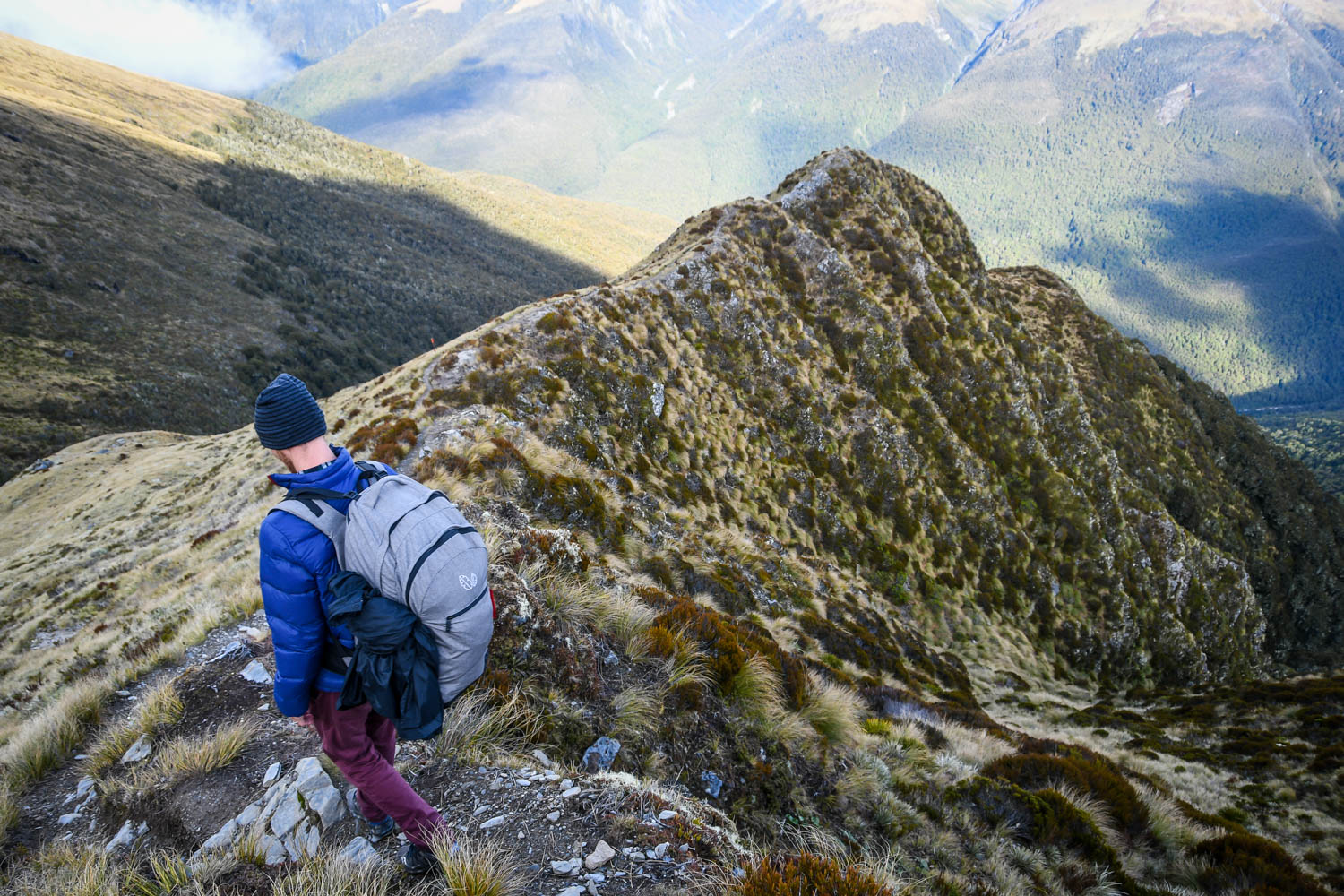
There are countless trails around the country of varying lengths and difficulty levels. Whether you’re looking for a short, hour-long hike or an epic multi-day trek, New Zealand is truly a hiker’s paradise.
Lucky for you, we’ve mapped out some of the most incredible New Zealand hikes for you to fit into your itinerary.
For the most part, the trails are very well-maintained by the DOC (Department of Conservation). There are typically toilets and trash bins at the trailhead, and signs marking the route.
Some of the most popular hikes are the trails known as New Zealand’s “Great Walks”. These 9 routes showcase some of the country’s most stunning scenery, and they typically take several days to complete. However, if you are limited on time, there are many, many more to choose from.
There are nearly 1,000 mountain huts around the country located on longer trails. You can hike in and spend the night, which is a popular thing for Kiwis and travelers alike.
Good to know: If you stay at a mountain hut, you are not trekking, you are tramping.
29. National Parks are free
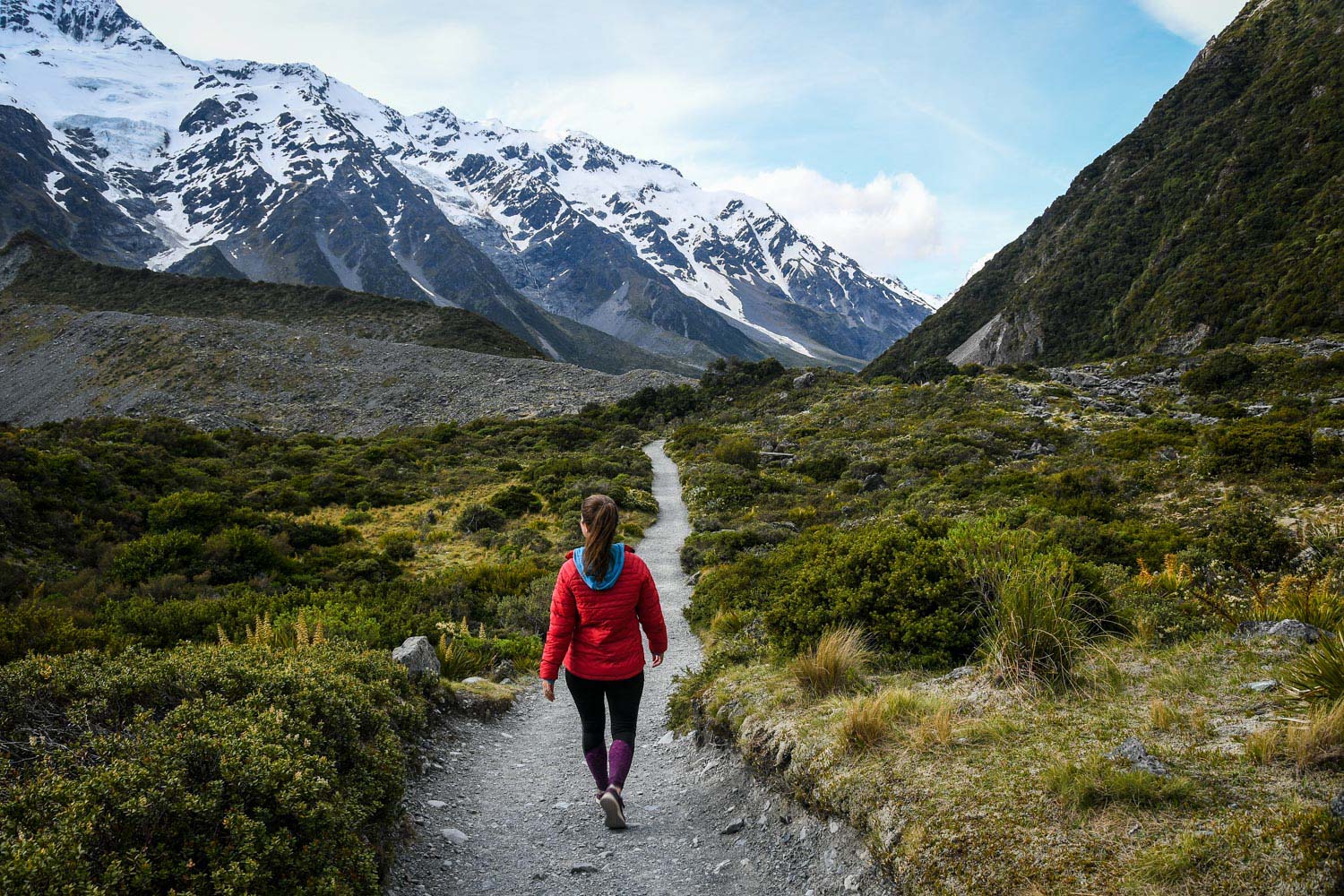
We’re used to paying entrance fees in the United States, so we just assumed it would be the same in New Zealand.
But we were (pleasantly) surprised to find all National Parks are free to enter! Take advantage of this and explore as many as you can.
And there are a lot to explore! In fact, protected National Parks comprise nearly one-third of the country and are definitely some of the best things to do in New Zealand.
Responsible Travel Tip: But be sure to read up on Leave No Trace principles so that these parks stay beautiful for the many visitors after you.
30. Hitchhiking is legal
You’ll surely see people on the side of the road with a smile on their face, a pack on their back, and their thumb sticking out.
It’s perfectly legal to hitchhike as long as you’re not doing it on a motorway. So pick that backpacker up, or try it out yourself. Either way, you’ll have an adventure!
31. This is the birthplace of bungee jumping
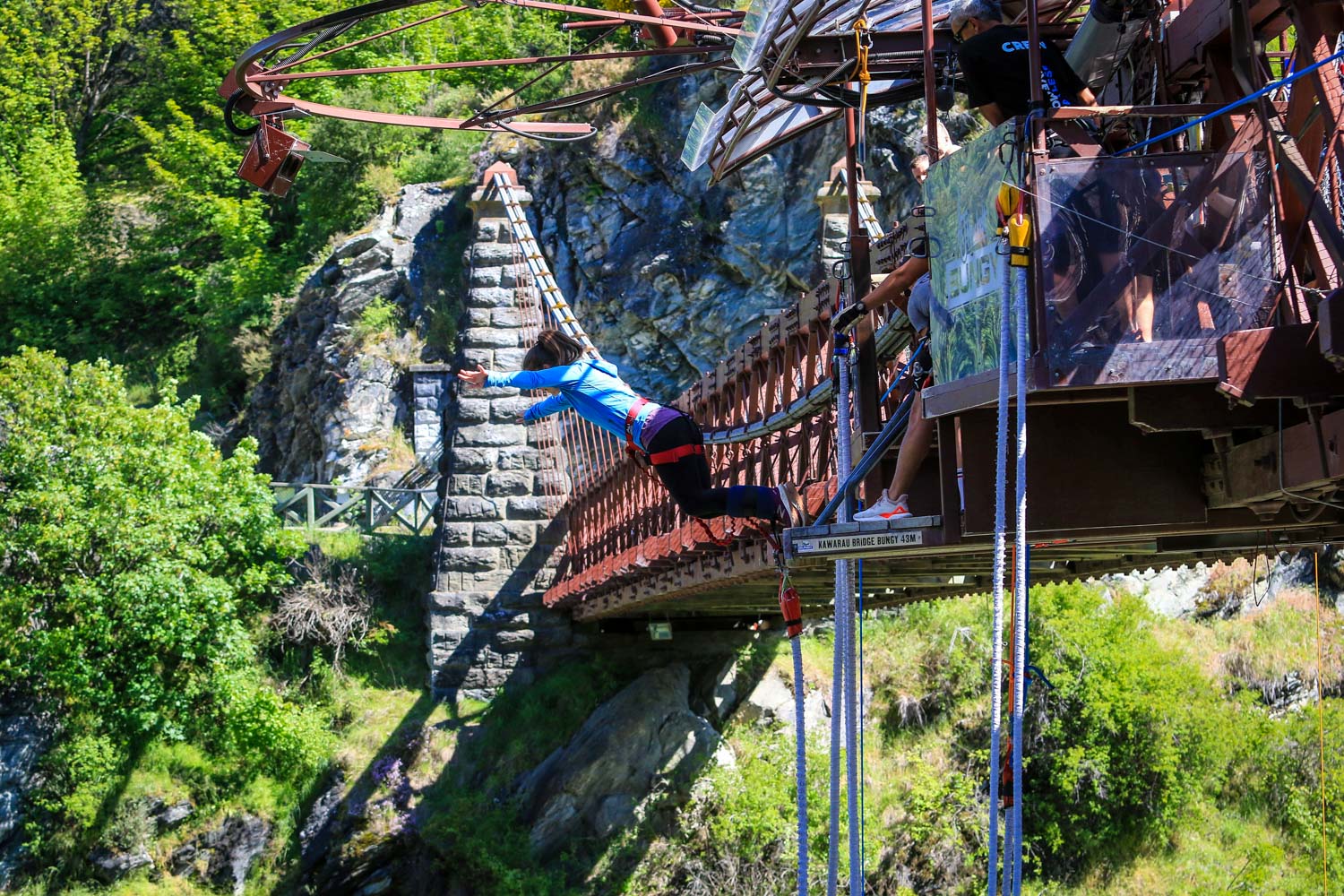
Not far from Queenstown is the world’s first commercial bungee jump! Atop the Kawarau Bridge, daredevils and regular folks looking for a check mark on their bucket list throw themselves into the canyon below. It’s one of the most adrenaline-pumping things to do in Queenstown.
World-renowned adventure company AJ Hackett is the original, and the only one operating on the Kawarau Bridge. Not only is this 46-meter jump the original, but it is beautiful to boot. With an aquamarine river and lush canyon walls, it’s not too bad to look at — if you can keep your eyes open, that is. Oh, and you have the chance to touch the water below.
Totaling in around NZ$320 (~$190 USD), this is not a cheap activity, but if you’ve ever dreamed of bungee jumping, why not do the original?! (Or choose from many other jump sites around the country!)
Psst! In New Zealand they spell it “bungy” jump.
32. New Zealand is safe, but beware…
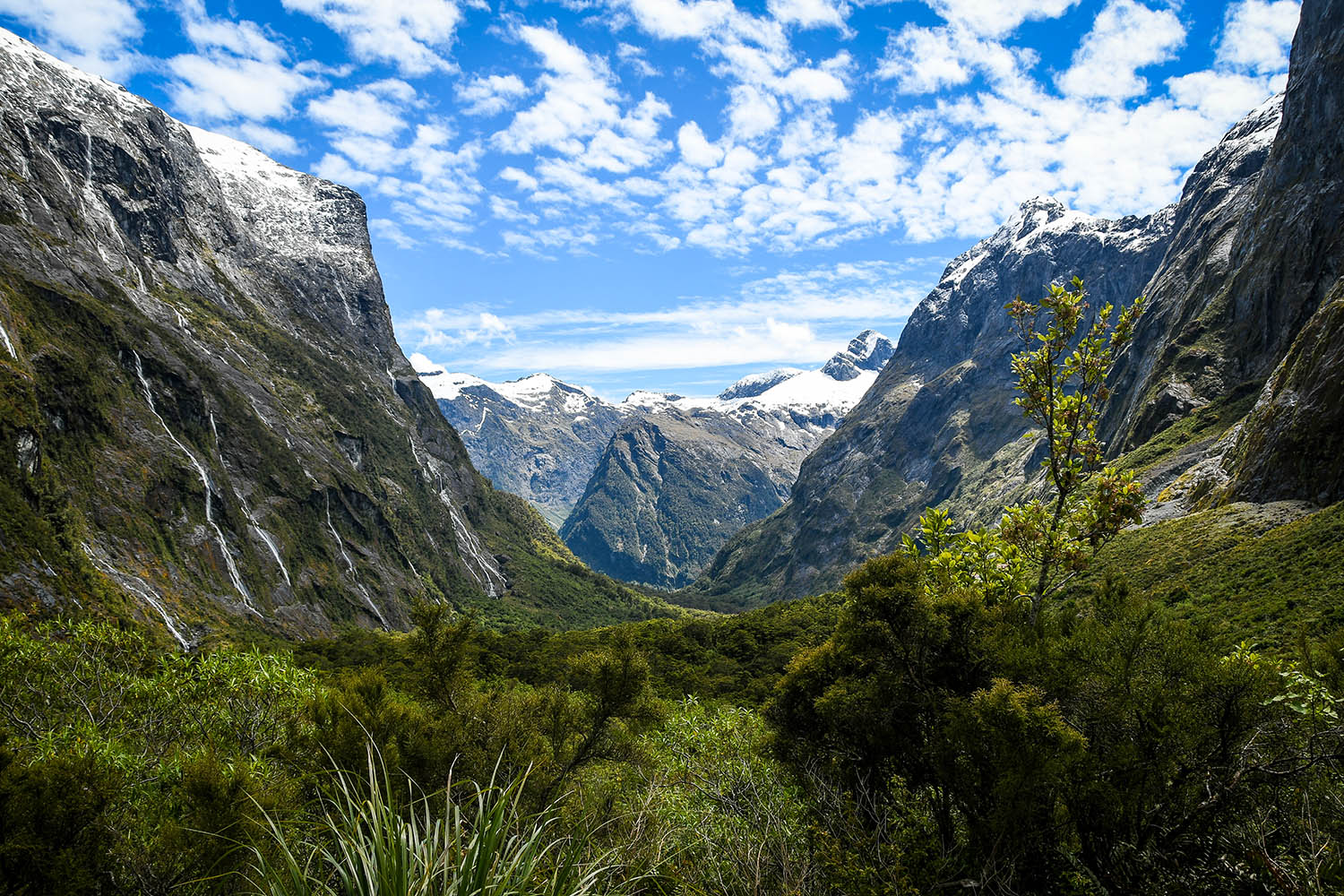
Overall, New Zealand is a very safe country and there is little crime. However, one area that we noticed several break-ins was around Rotorua. There were a few parking lots near waterfalls and hot springs with signs warning about thieves. And we saw glass on the ground, from a shattered car window.
We didn’t think much of it, but we made sure our valuables were out of sight. When we returned to our van, there was a couple frantically looking around for their passports, which had been stolen from their car along with their wallets.
Take care of your valuables, especially when you park your car and plan to leave it for a while.
Best time to visit New Zealand
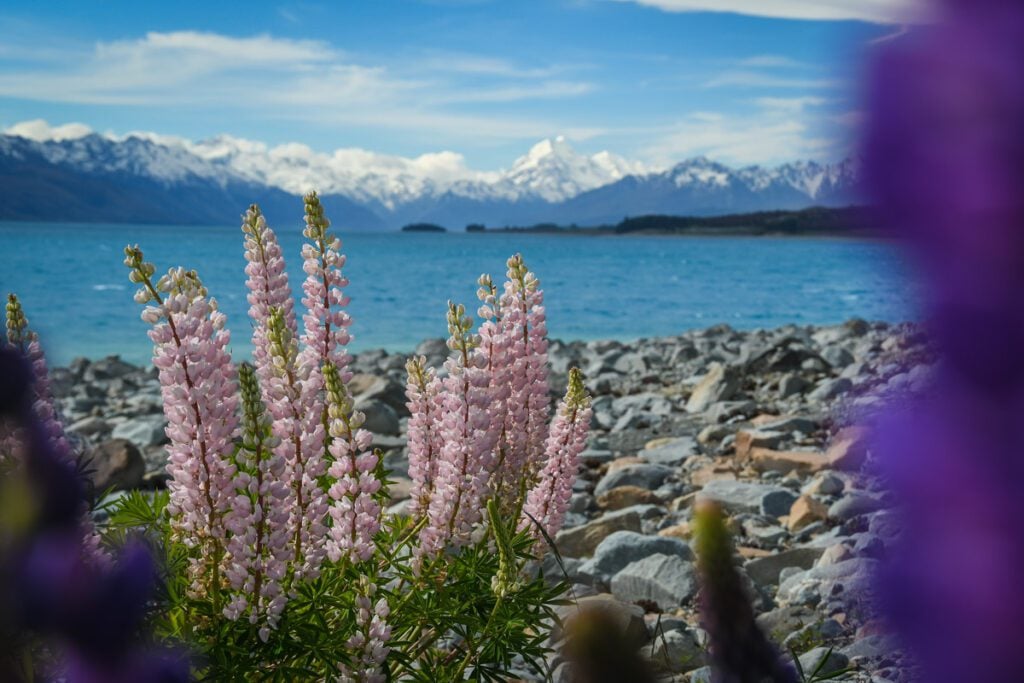
The best time to visit New Zealand largely depends on your preferences and the activities you have in mind.
- Spring (December – February) is ideal if you’re a photography enthusiast. Marked by warming temperatures and longer days, spring also coincides with the stunning lupin season that captivates photographers.
- Summer (January – March) is perfect for outdoor enthusiasts, offering long, sunny days for hiking and leisurely beach activities.
- Fall (March – May) is a sweet spot, allowing you to avoid high-season crowds and prices while still enjoying comfortable temperatures and ample daylight for various outdoor adventures.
- Winter (June – August) is excellent for winter sports, such as skiing and snowboarding, with the added advantage of discounted rates and fewer crowds.
Our personal pick would be to plan your New Zealand itinerary during the shoulder season between spring and summer (November/December).
For an in-depth guide on the regional seasons, weather patterns, and other factors, check out our complete guide to the best time to visit New Zealand.
How many days do you need
This is a tough one to answer because even a lifetime wouldn’t be enough. Seriously.
We spent 5 weeks traveling around New Zealand in a campervan, and we’ve been lucky enough to experience a lot of what this country has to offer. Even so, we still left with a loooong list of things to do “next time”.
That said, we do have some suggestions based on the amount of time you have to explore New Zealand:
- 1 Week in New Zealand: If you have just one week, we recommend focusing on a specific area. Base yourself in a city like Queenstown or Auckland and plan for a couple of day trips.
- 2 Weeks in New Zealand: Choose one island to explore. We have perfect 2-week itineraries ready-to-go for both the North Island and South Island. All the hard work is done for you!
- 3 Weeks in New Zealand: We’d recommend spending 2 weeks exploring the South Island (you can follow our exact itinerary) and one week based in Auckland to explore the North Island.
- 1 Month in New Zealand: We think a month is ideal for your first trip to New Zealand. You’ll have the time to experience a good chunk of the country’s must-sees and hidden gems (we have lots!).
How to get around
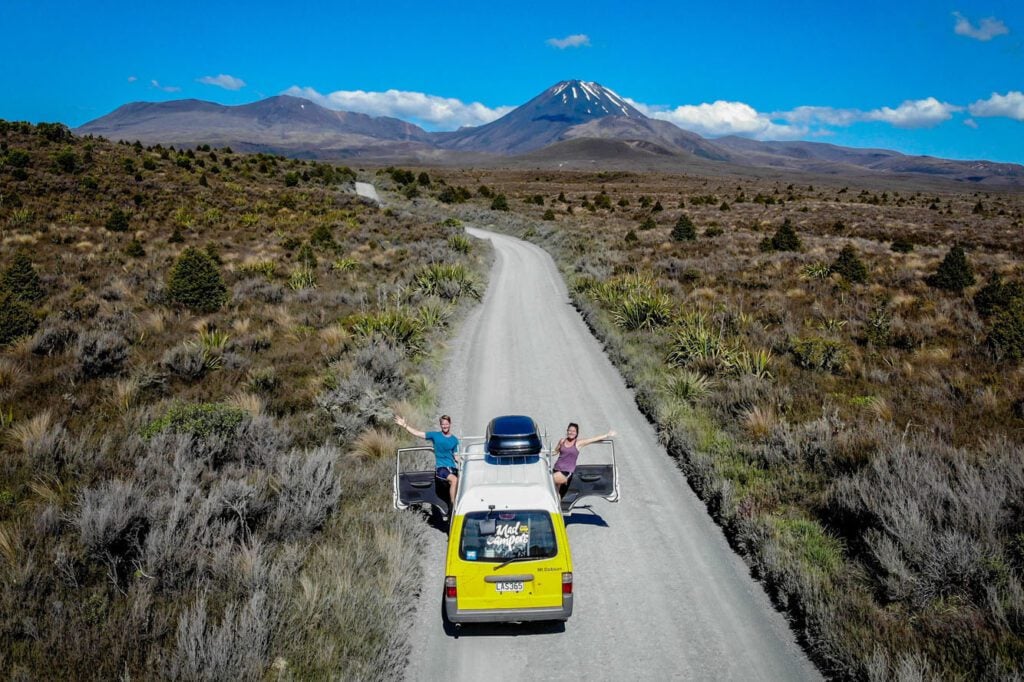
When it comes to getting around New Zealand, having your own vehicle is a must. Public transportation is limited outside major cities, and you’ll miss out on so many of the country’s best hidden gems if you’re relying on buses or tours.
Trust us—the magic is in the places you stumble upon between destinations.
Now that we’ve established you’re renting a vehicle, you might be wondering, car or campervan?
Our top recommendation is traveling by campervan.
We explored New Zealand this way and absolutely loved the freedom it gave us. You can wake up next to the beach one day, and then deep in the mountains the next. Plus, there are loads of scenic (and often free!) camping spots that you’d never find without your own wheels.
Not into the campervan life? No worries! You can just as easily rent a car and road trip around the country while staying in hotels, hostels, or Airbnbs along the way. Just keep in mind that driving is on the left side of the road in New Zealand, and many roads are narrow, winding, and oh-so-scenic.
We have a guide to driving in New Zealand that’ll be helpful no matter which mode of transportation you choose.
Cook Strait Ferry
The Cook Strait Ferry operates between the North and South Islands in New Zealand, connecting the cities of Wellington and Picton. The ferry service provides both passenger and vehicle transportation, making it a vital link for travelers exploring both islands.
Not only is it an efficient way to get from one island to the other (especially if you are traveling by campervan or car), the ferry is an iconic journey across the Cook Strait with incredible views. Many people believe it’s the most scenic ferry crossing in the world!
Top things to do in New Zealand
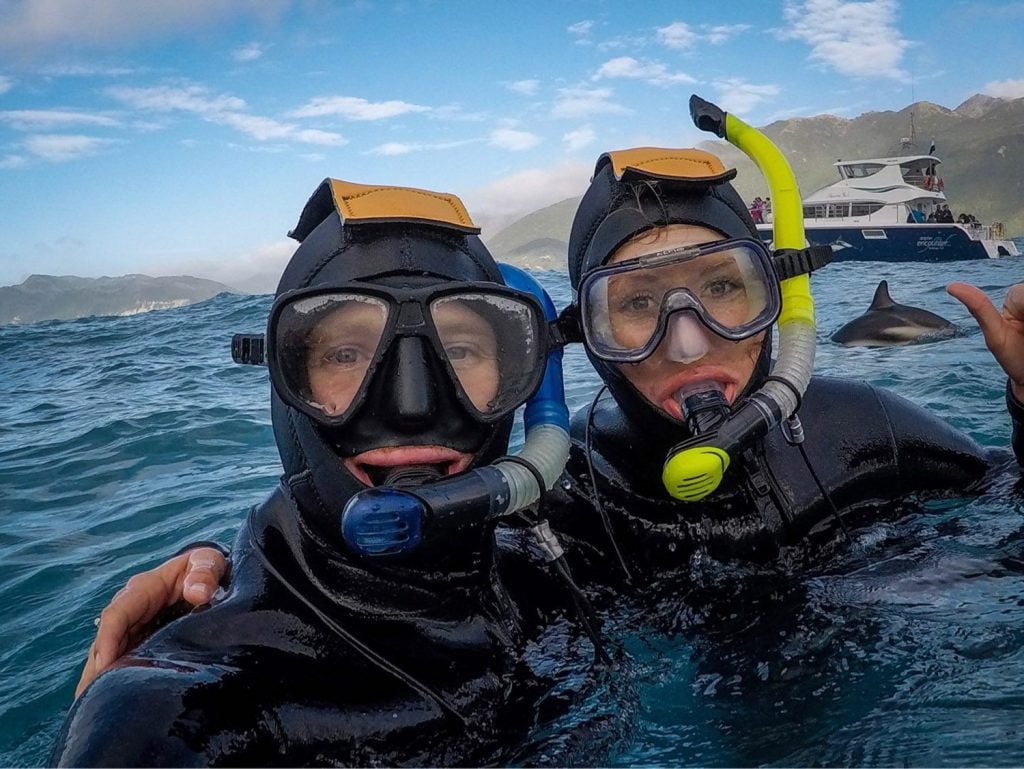
If you’re looking for the very best things to do in New Zealand, here are our top recommendations:
- Explore Milford Sound
- Go bungy jumping in Queenstown
- Swim with dolphins in Kaikoura
- Hike the Tongariro Alpine Crossing
- Learn about Maori Culture
- Go wine tasting on Waiheke Island
- See sunrise at Cathedral Cove
- Soak in a hot spring
We have an entire article dedicated to the best things to do in New Zealand where we share details and tips for first-time visitors.
Perfect New Zealand itinerary
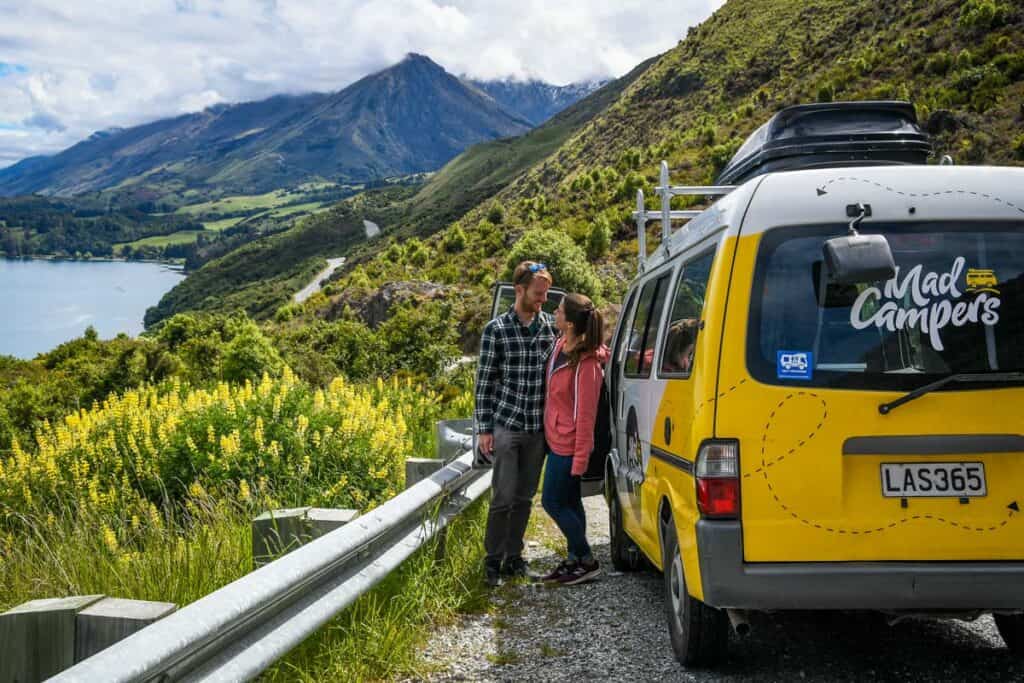
Raise your hand if you don’t want to spend hours of time researching and you just want all the info right at your fingertips!
If your hand is up, keep reading…
If you like the research, all the power to you! Feel free to use our itinerary outlines as a starting point as well as our destination guides for ideas of things to do (we’ve got a bunch of them!):
- South Island New Zealand Itinerary: Epic 2-Week Road Trip
- North Island New Zealand: 2-Week Itinerary
- Planning a Campervan Trip in New Zealand: Ultimate Guide
But if you want to save some hours of your life, we’ve already put in more than enough for you and us combined. Trust us.
And we’re happy to share everything we learned — from digging through reviews, Youtube and all sorts of Internet rabbit holes, as well as actually traveling in New Zealand by campervan for 5 weeks!
We’ve curated what we think is the perfect New Zealand road trip, and we want you to be able to copy our route!
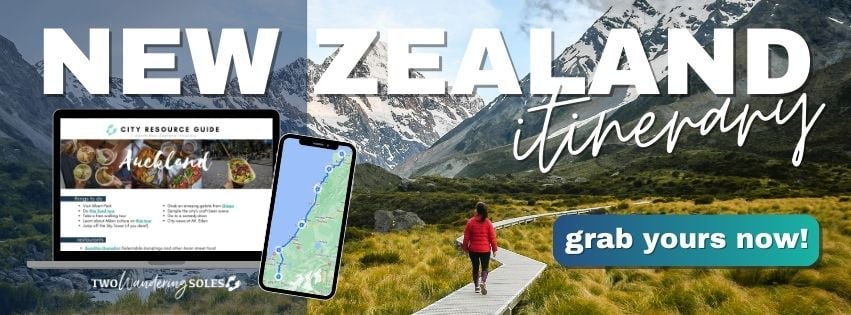
In this 1-month itinerary, you’ll find:
- Can’t miss sights and experiences
- Where to eat
- Where to stay (whether you’re camping or doing hotels)
- Insider Tips
- Suggestions for extending this trip
We’ve spent hours of research putting this all together, just for you!
In full transparency, this is a paid itinerary since it has taken an incredible amount of time for us to create.
However, we keep all of our paid itineraries affordable – just $15 for an entire 1-month itinerary. We think this is an incredible value considering almost all your planning will be done for you!
Plan your trip to New Zealand
We have TONS of resources on travel in New Zealand and destinations throughout the country. Check out our Ultimate New Zealand Travel Guide for all the answers to your most burning questions, and read some of our favorite articles below.
- Start with our guide to the best time to visit New Zealand so you can pick the perfect season for your adventure.
- Get inspired with our list of exciting things to do in New Zealand for first-time visitors.
- Planning your route? Our ultimate campervan trip planning guide covers everything you need to know before you hit the road.
- Trying to find the best rental? We’ve done the research for you and created a guide for the best campervan rentals in New Zealand.
- Map out an unforgettable journey with our South Island road trip itinerary.
- Exploring the North Island too? Don’t miss our North Island road trip itinerary packed with must-see spots.
- Lace up your boots and hit some of the best hikes in New Zealand — complete with local tips!
- Visiting Milford Sound? Check out our Milford Sound travel guide, including essential planning tips.
Don’t miss your chance to grab our New Zealand packing list!
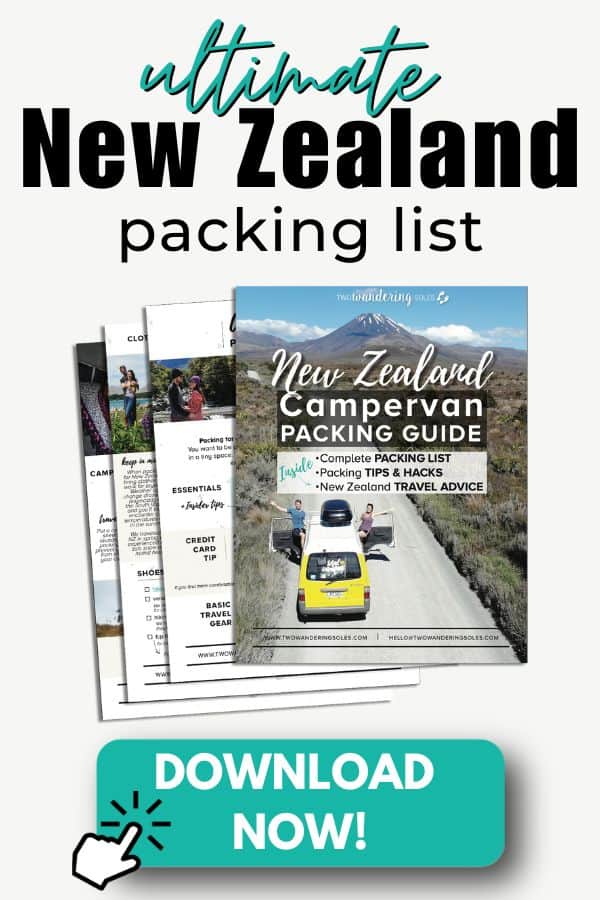
In this FREE New Zealand packing list, we’ve provided packing checklists for everything from clothing and toiletries (for both women and men!) to what shoes to pack and extra medicines you may want to have on-hand just in case.
Plus, we’re sharing tons of packing hacks and tips for traveling in New Zealand that you won’t find anywhere else! And it’s completely FREE, so why not!?
Save this article on Pinterest for later!
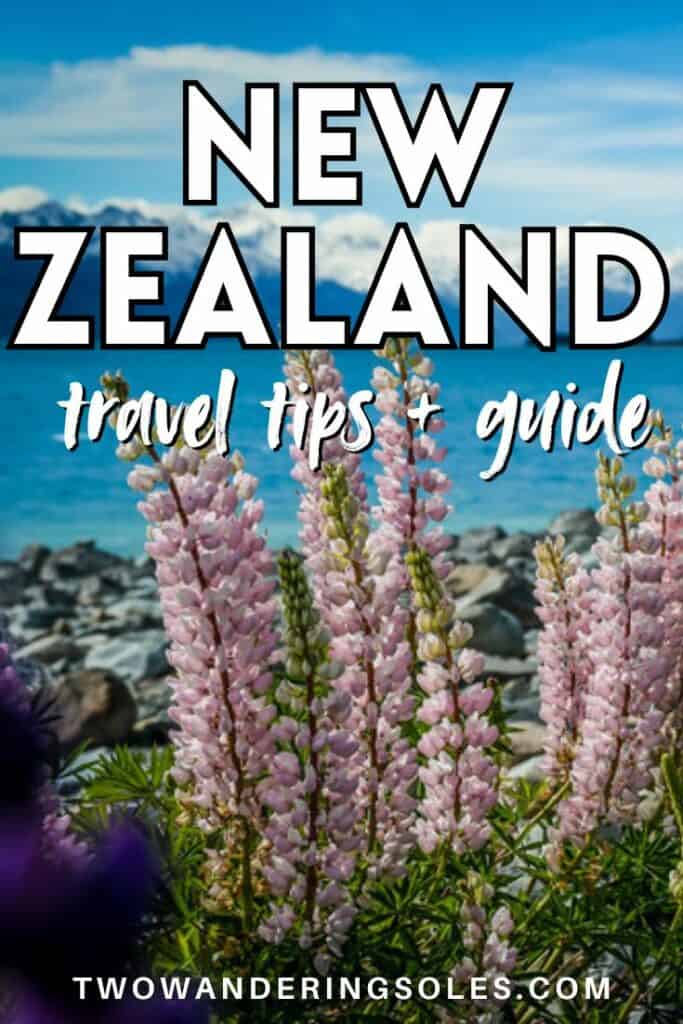
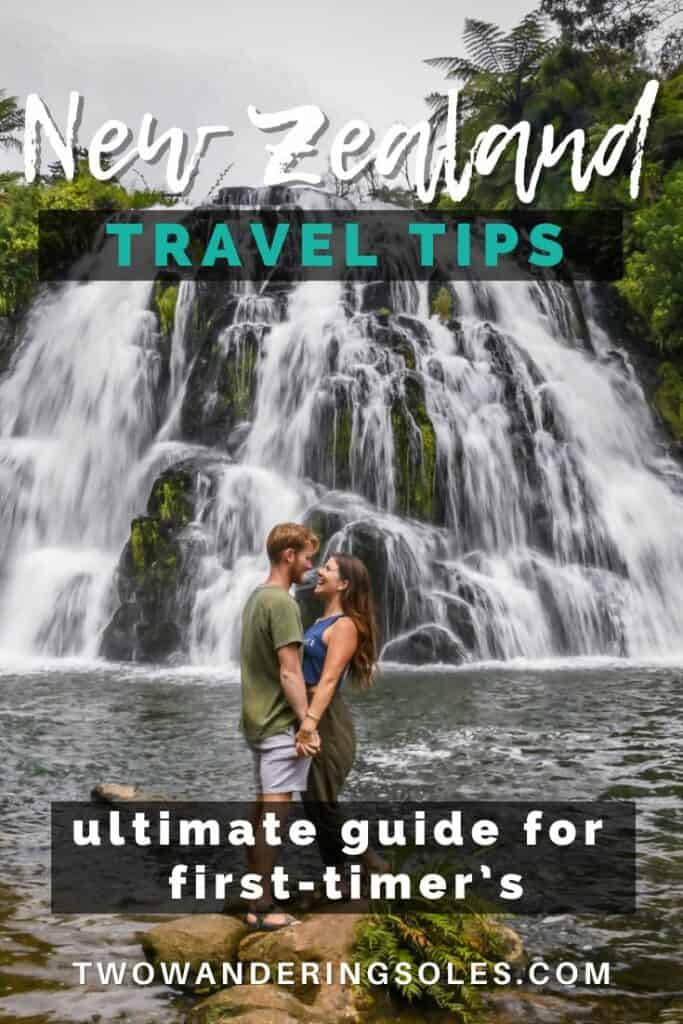
We want to hear from you!
Are any of these tips for visiting New Zealand surprising to you? Do you have any more New Zealand travel tips you think we missed? Let us know in the comments below!
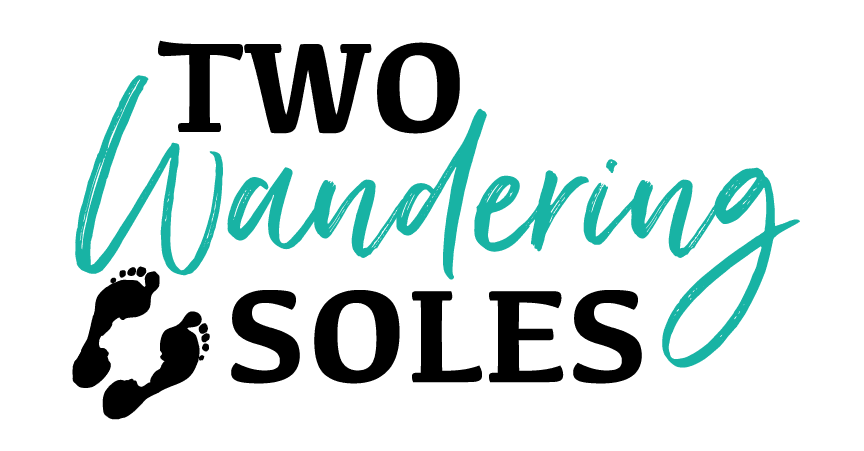
This was such a helpful and honest guide! I really appreciate how you shared the surprises you encountered while traveling New Zealand, especially the part about the Internet—good to know it’s worse than expected. Your campervan experience sounds incredible, and I love the mix of practical tips and personal stories. The Kiwi slang section made me laugh and will definitely come in handy! I’m planning my first New Zealand trip soon, and your advice about being prepared for limited service and going “off the grid” is super valuable. Thanks for putting together such a detailed travel resource!